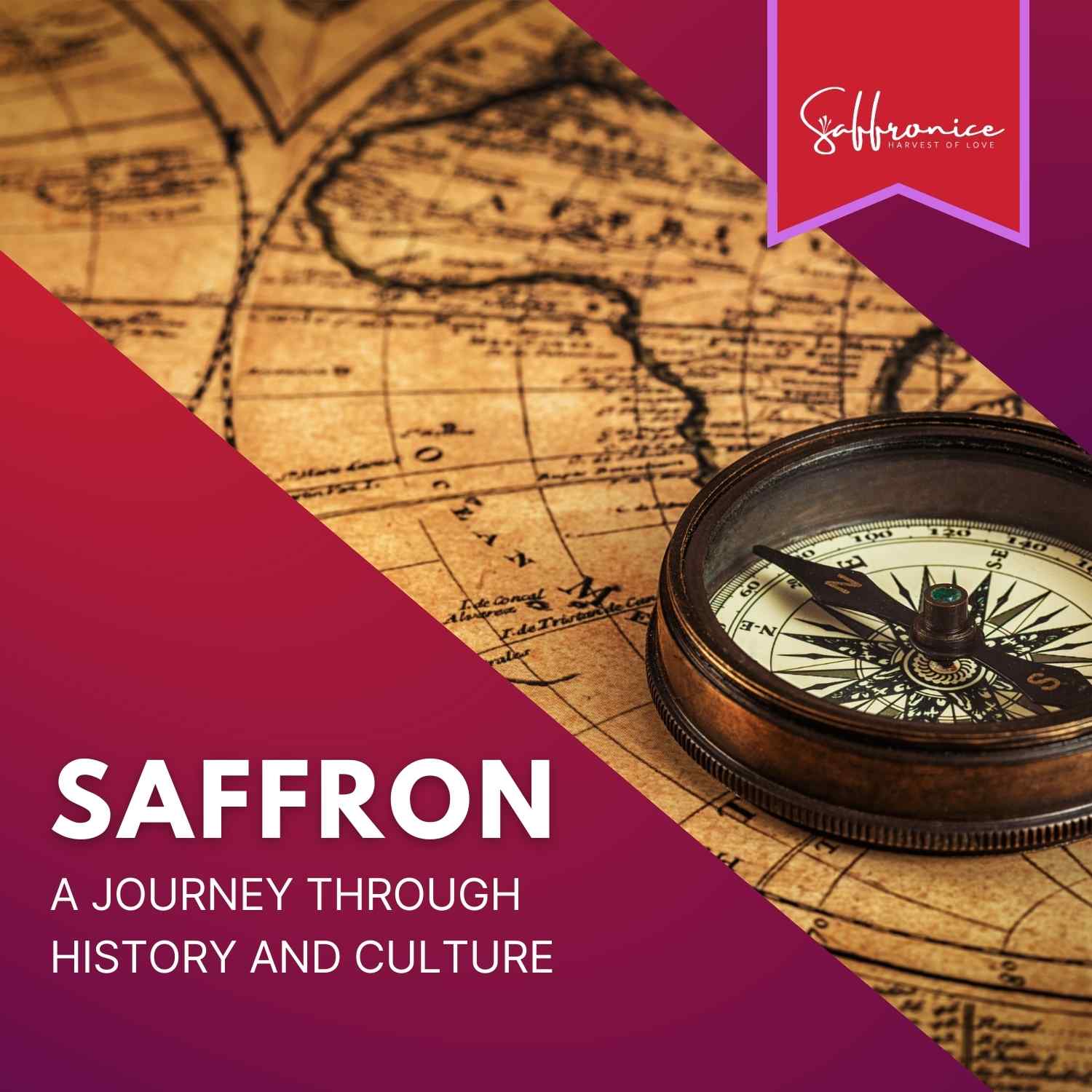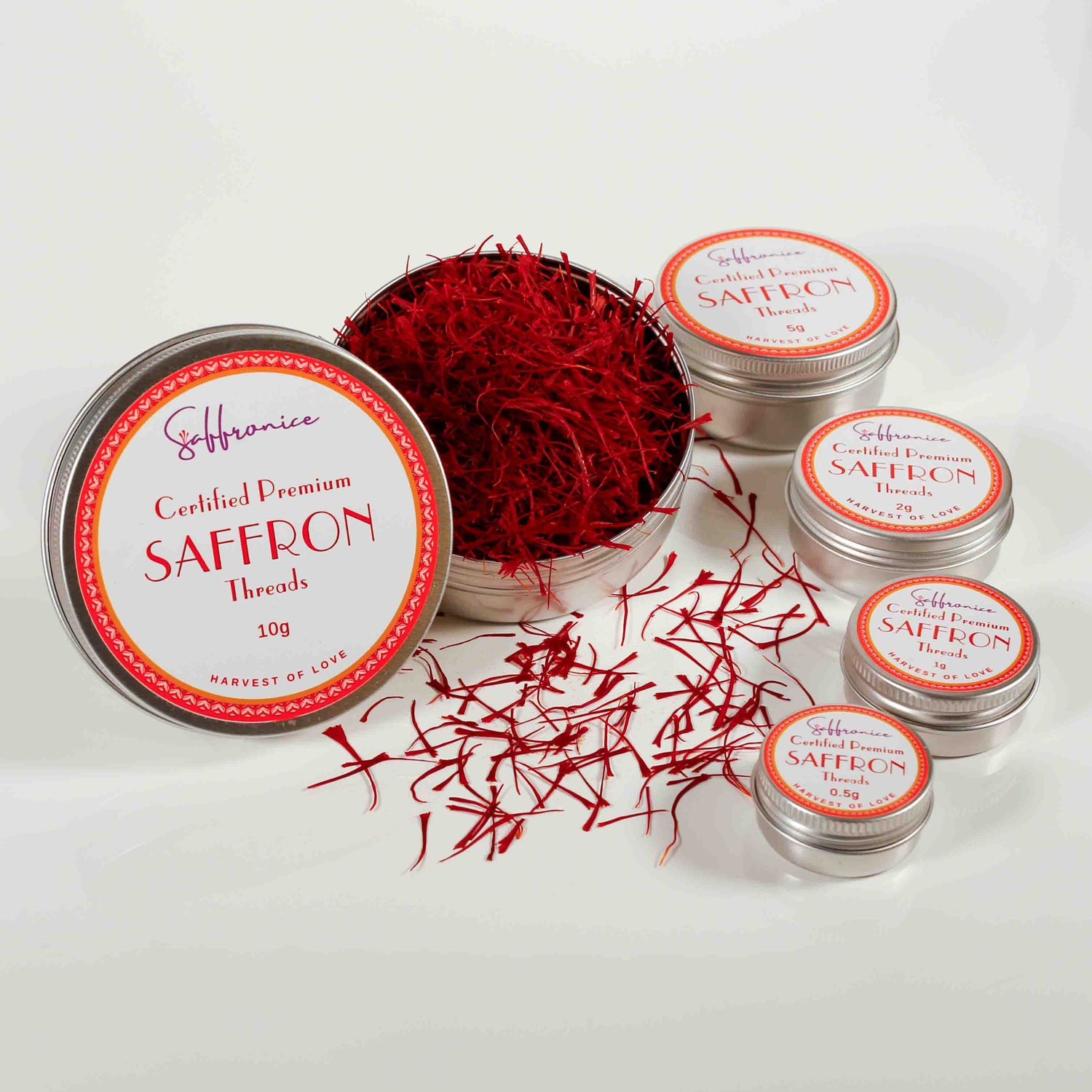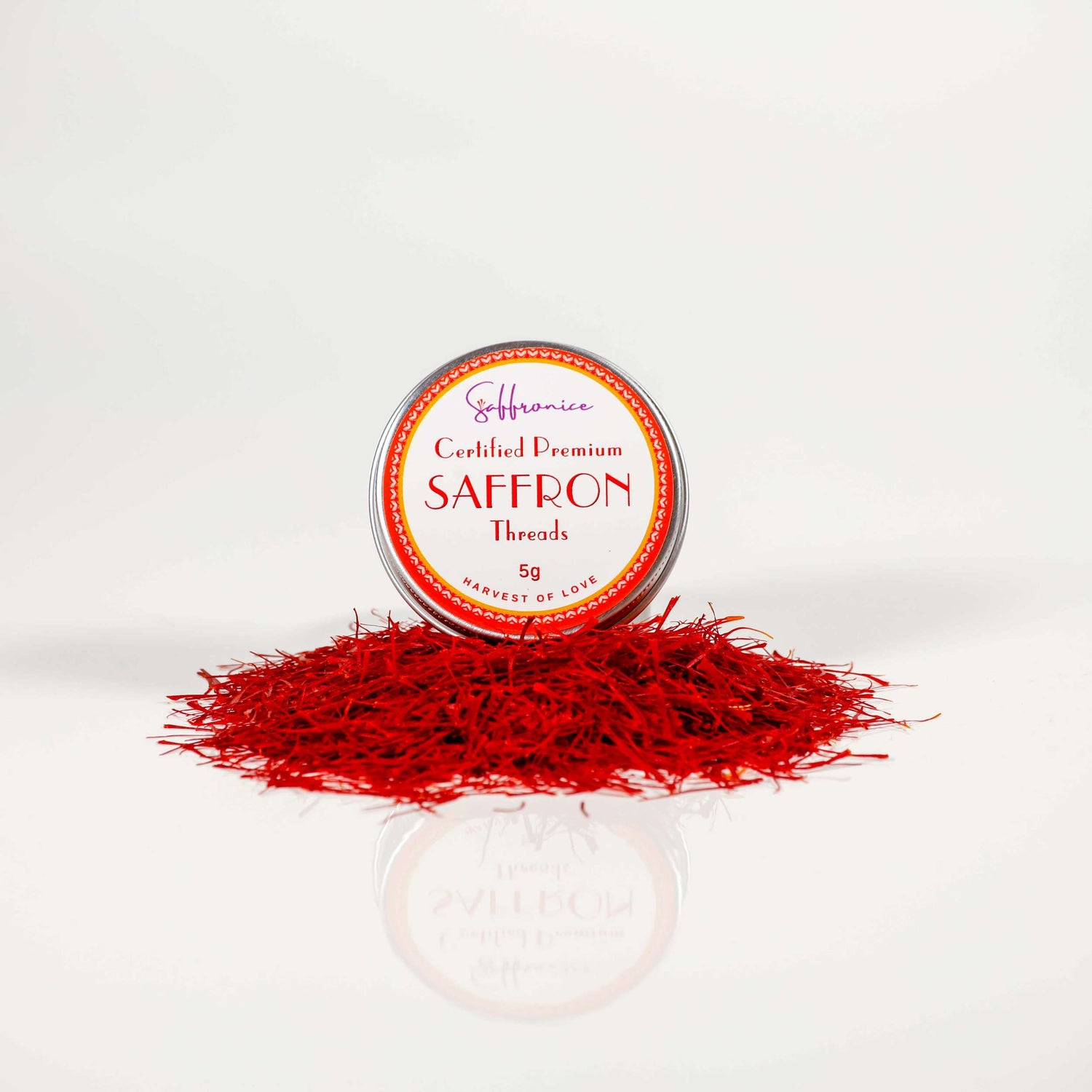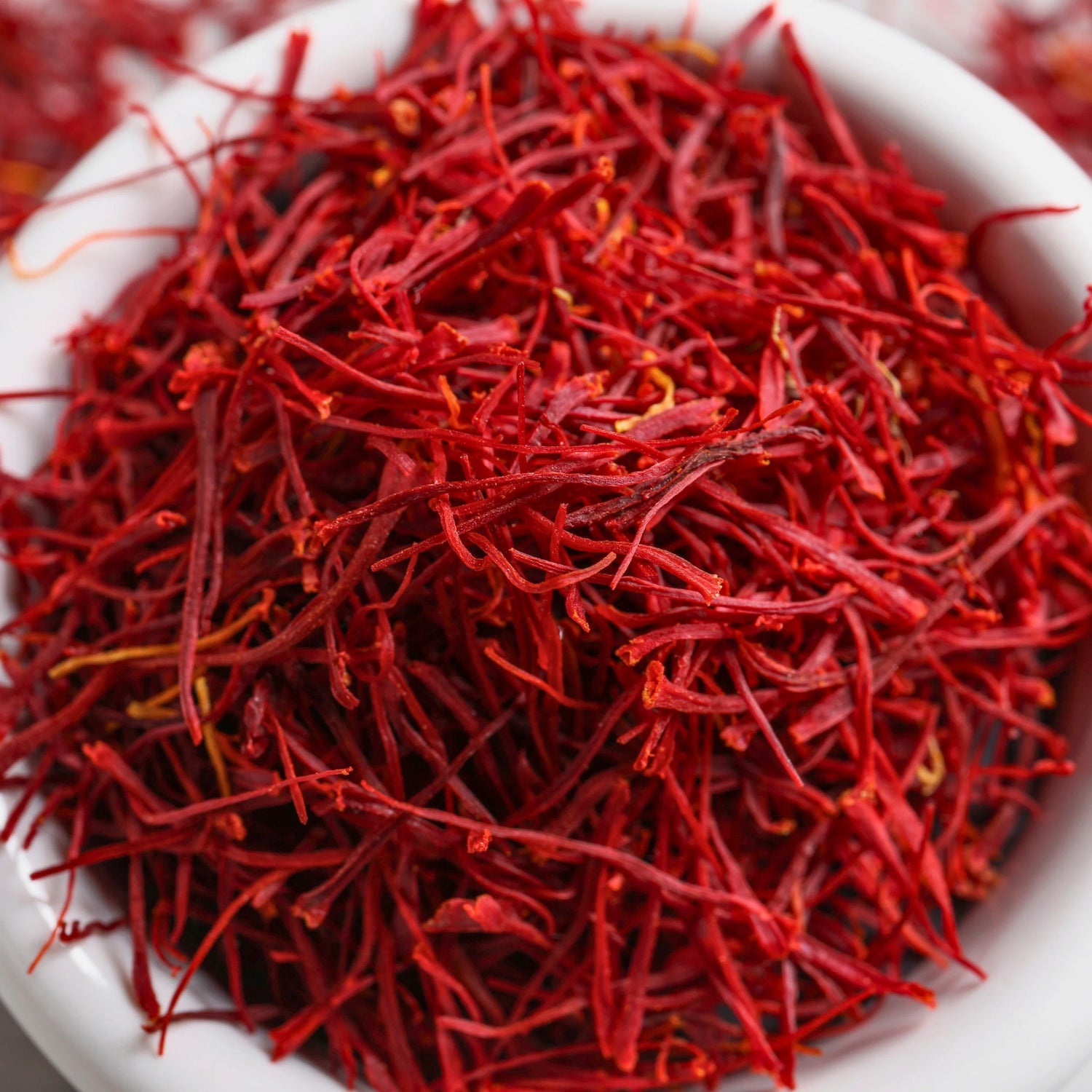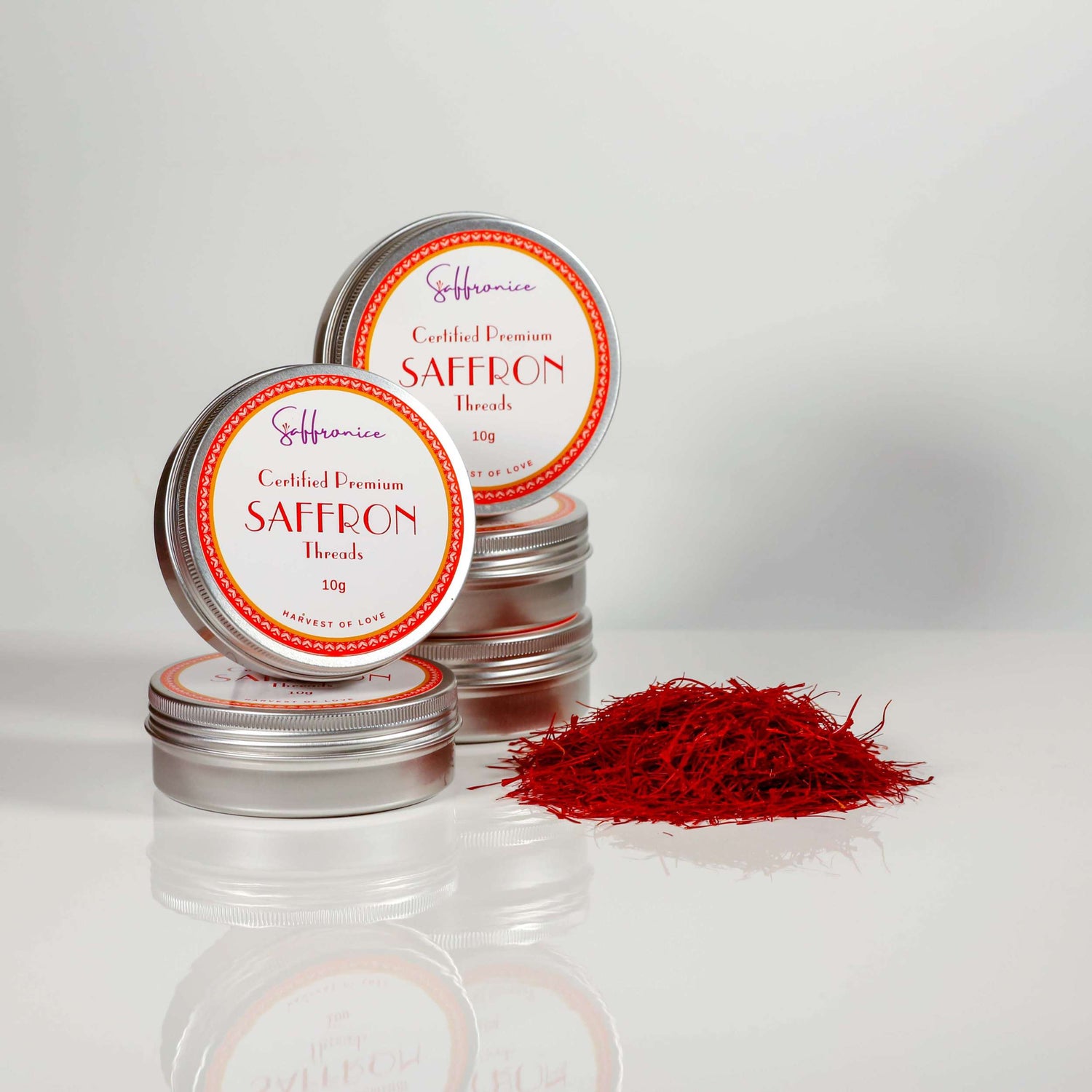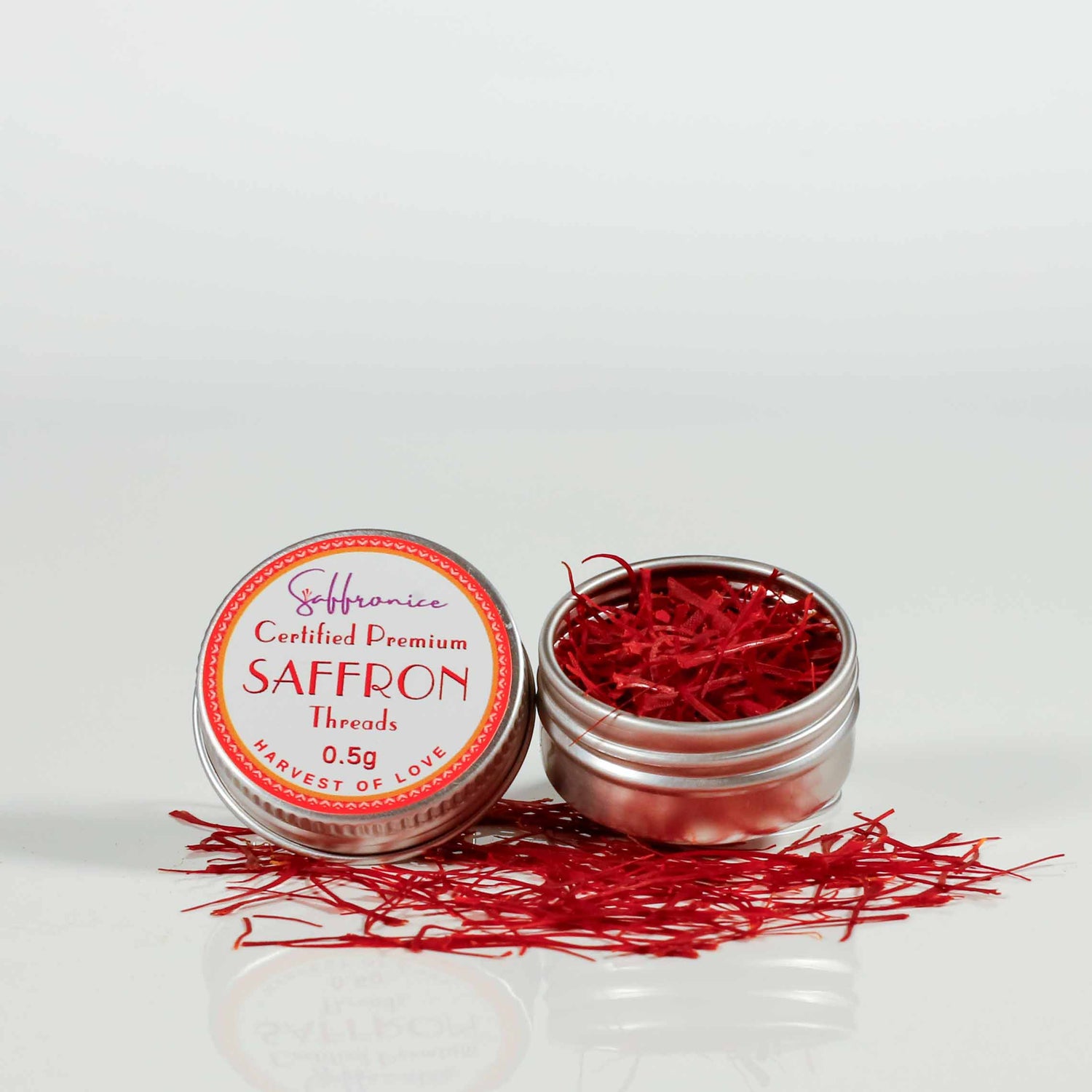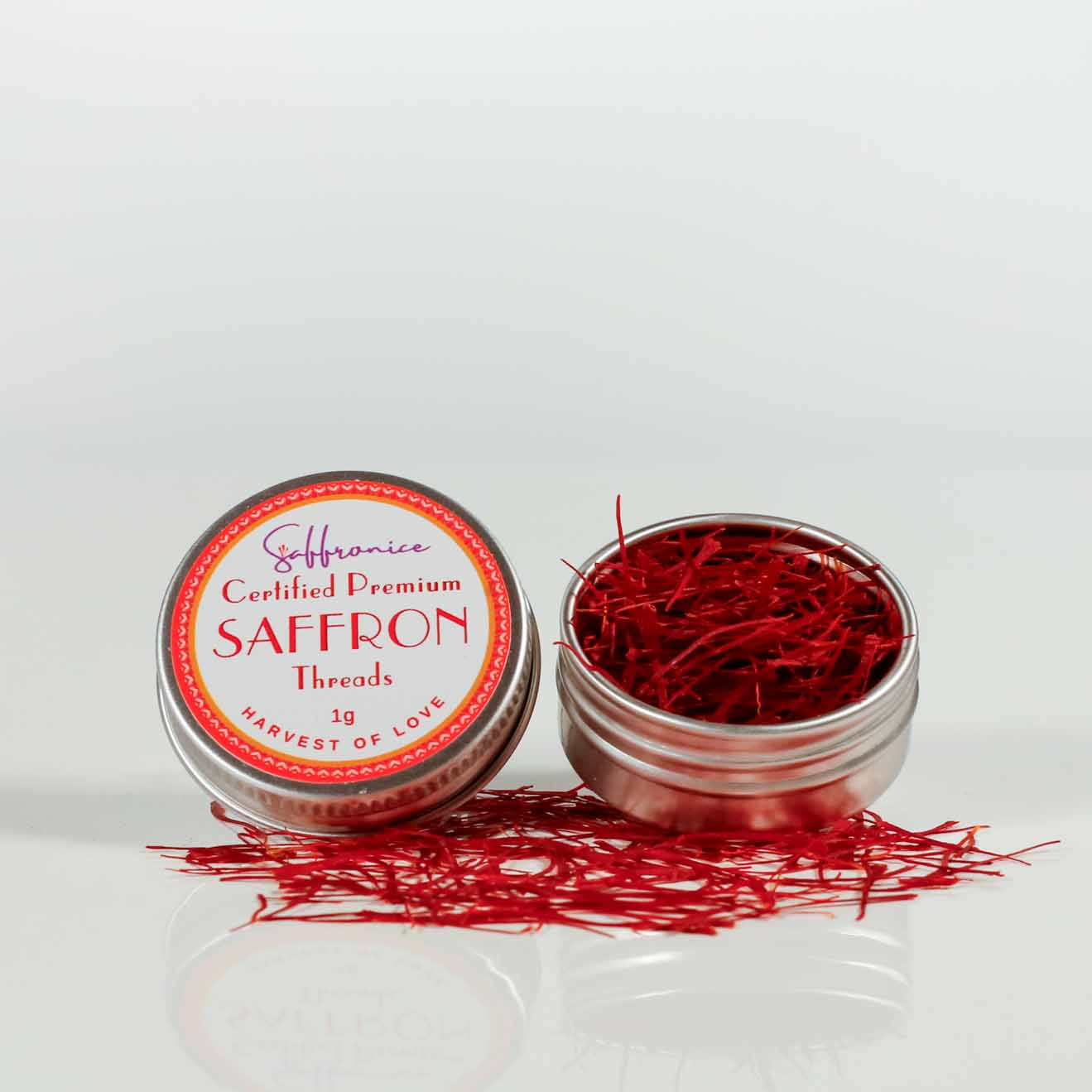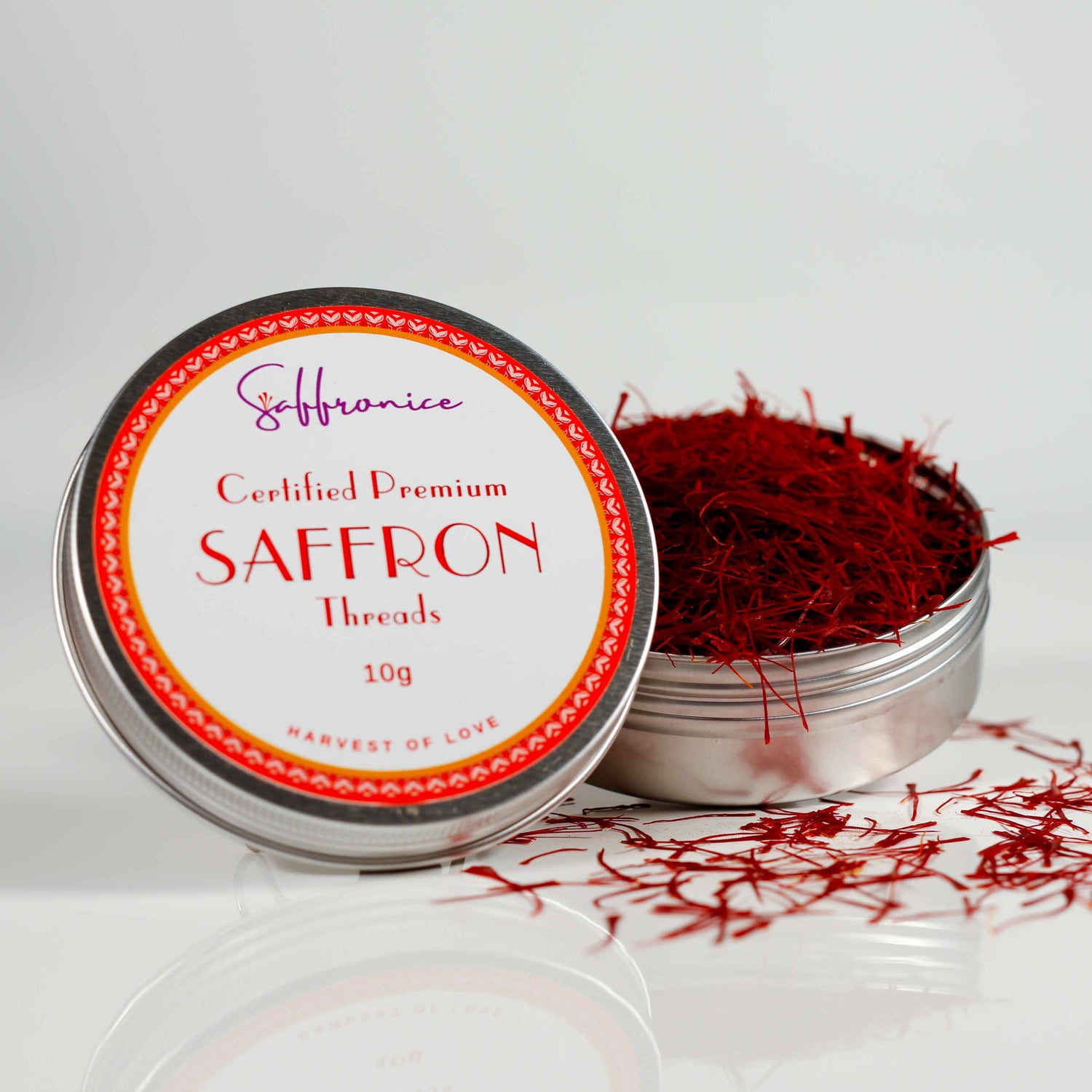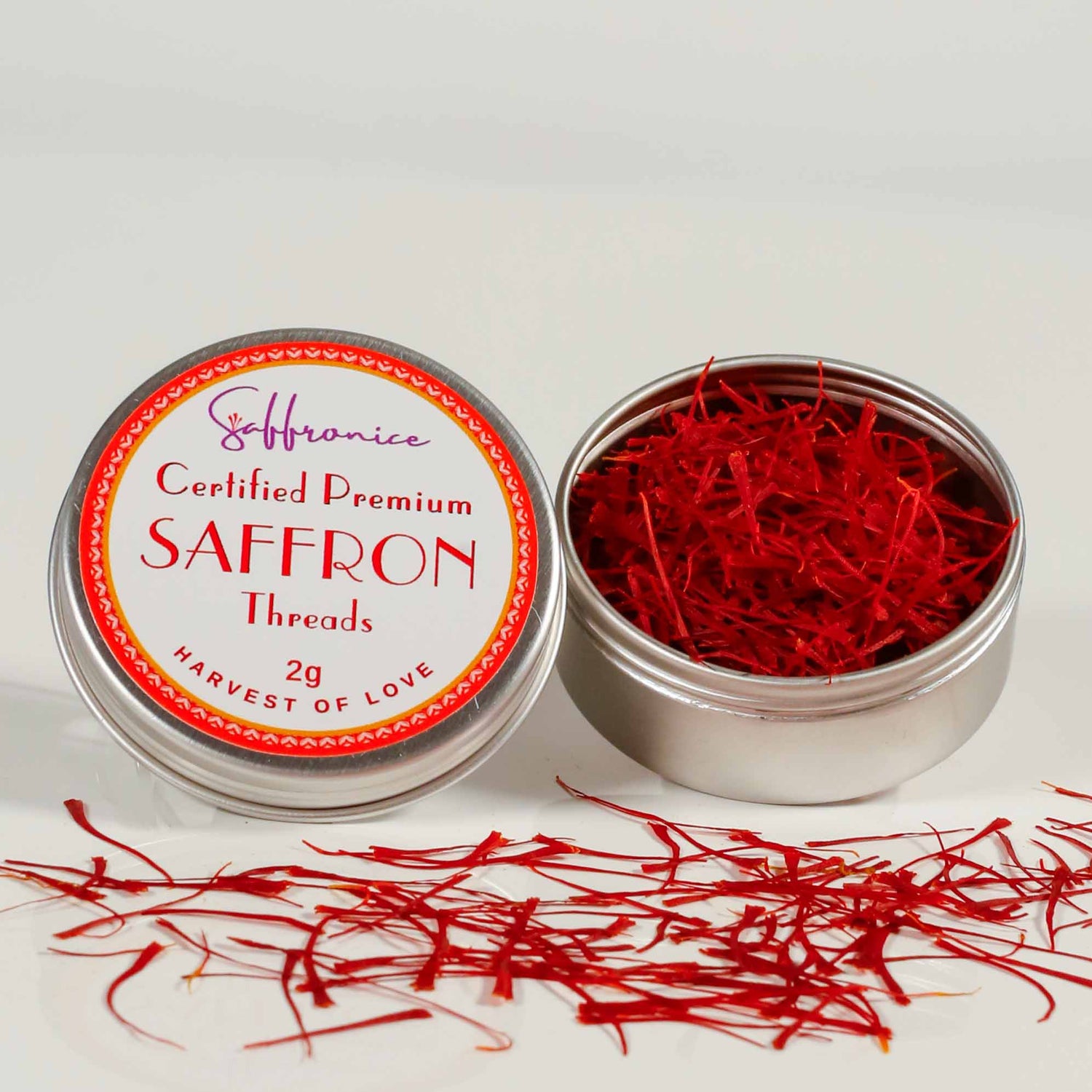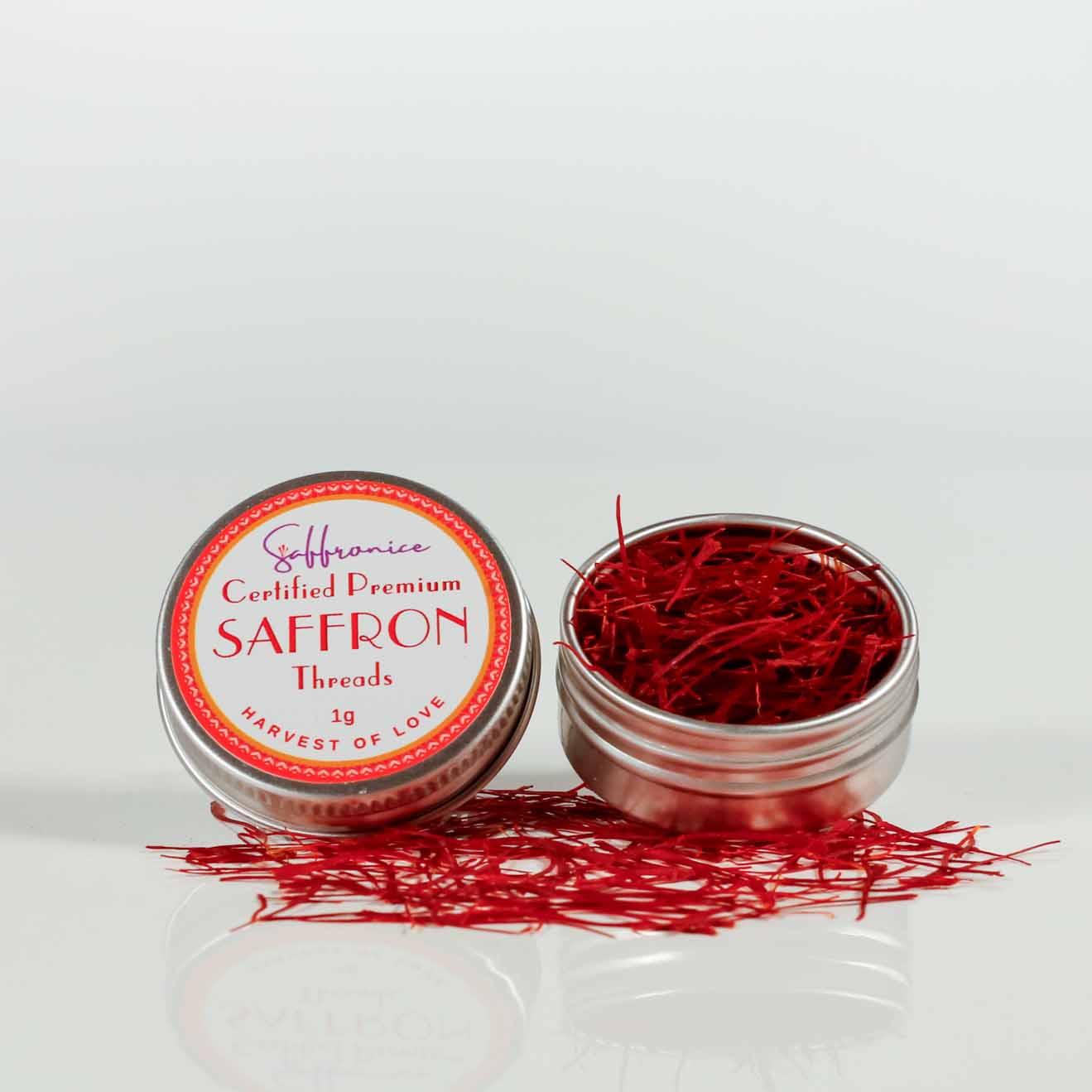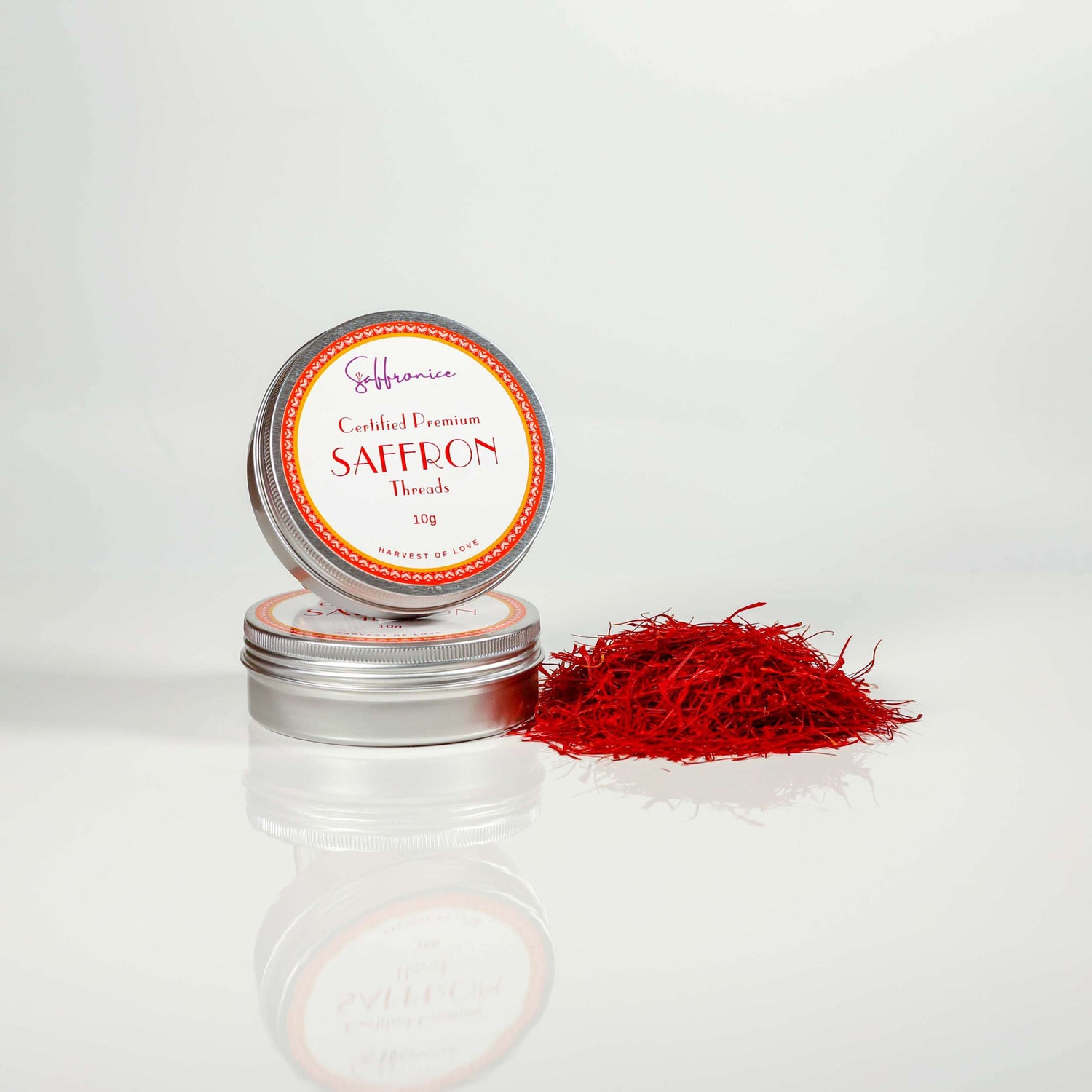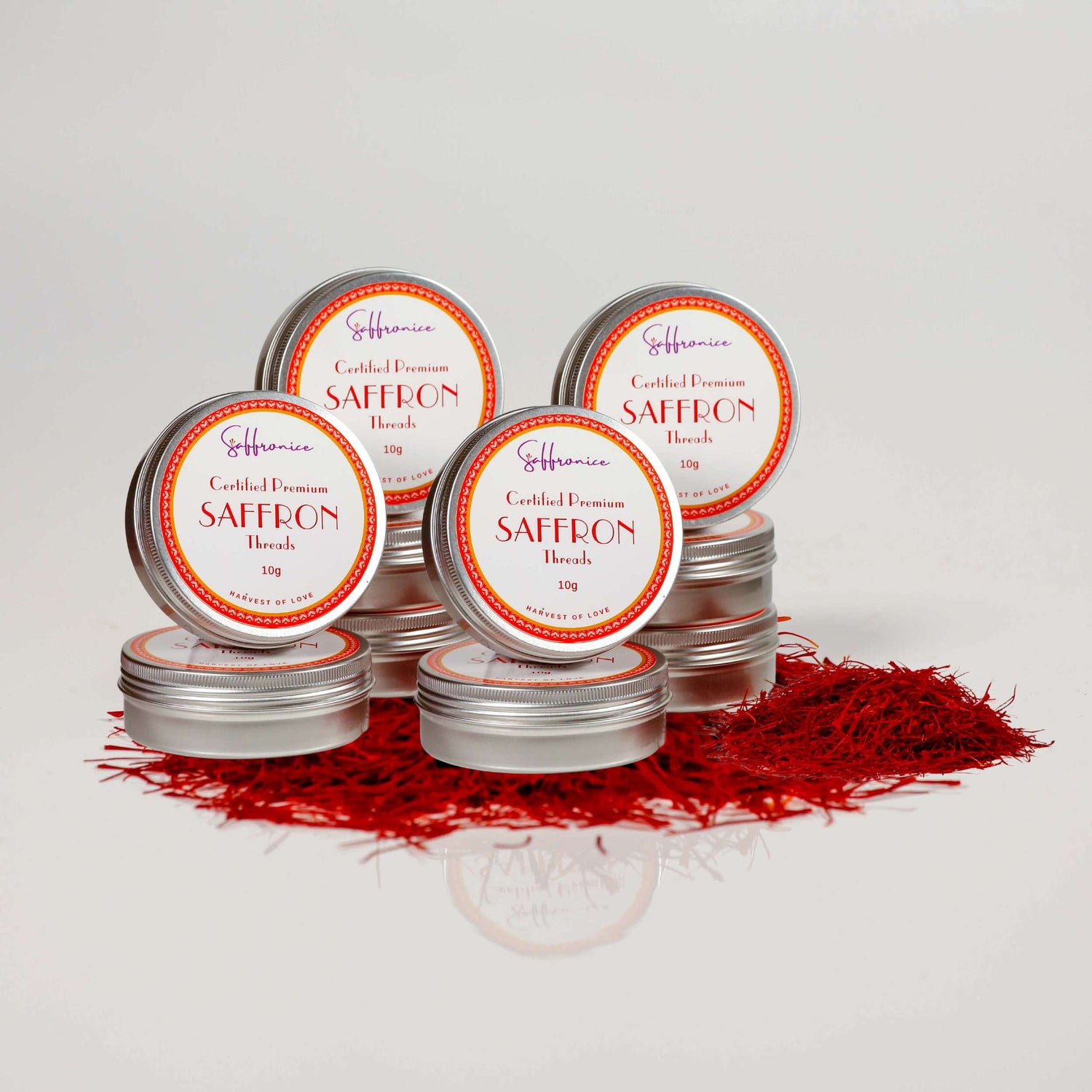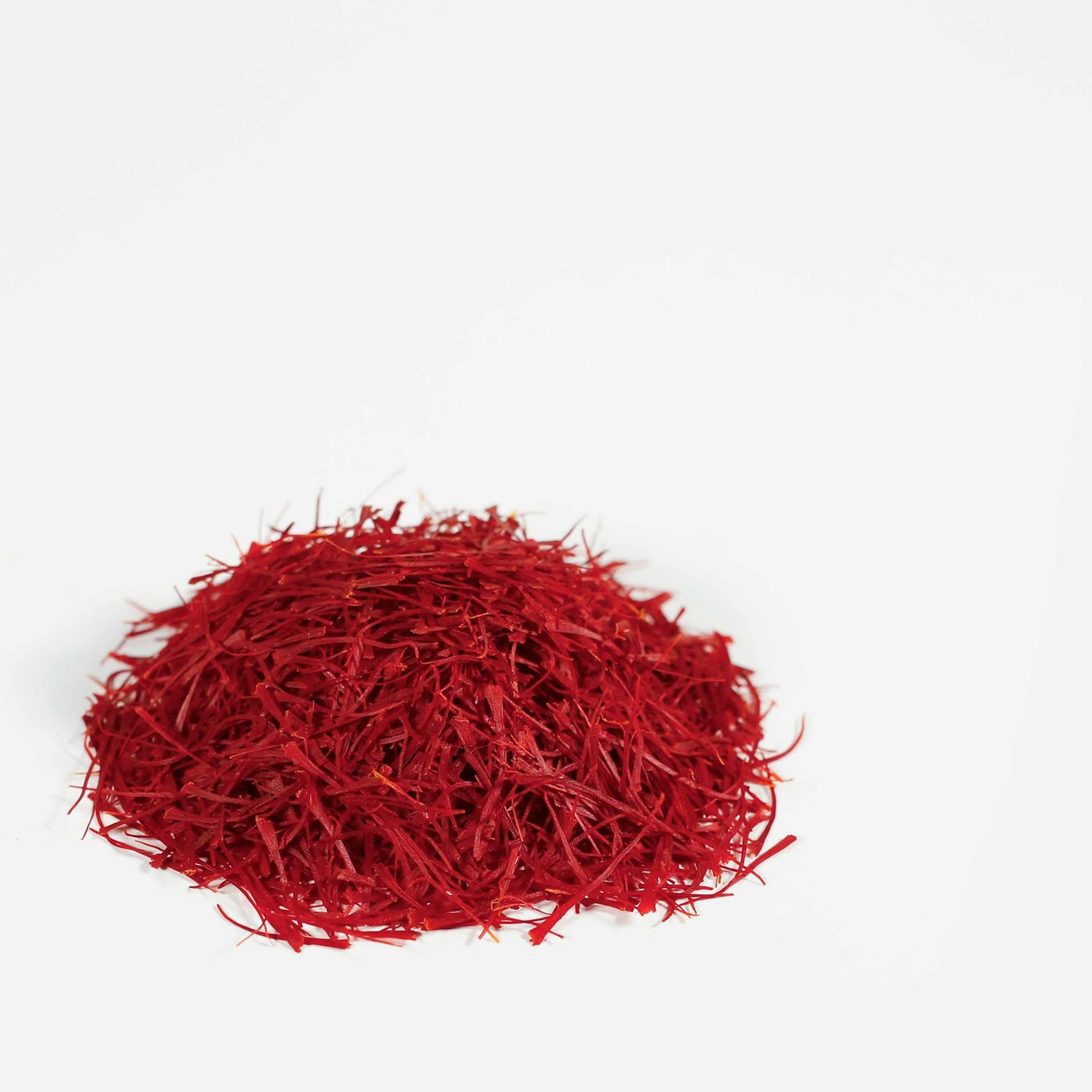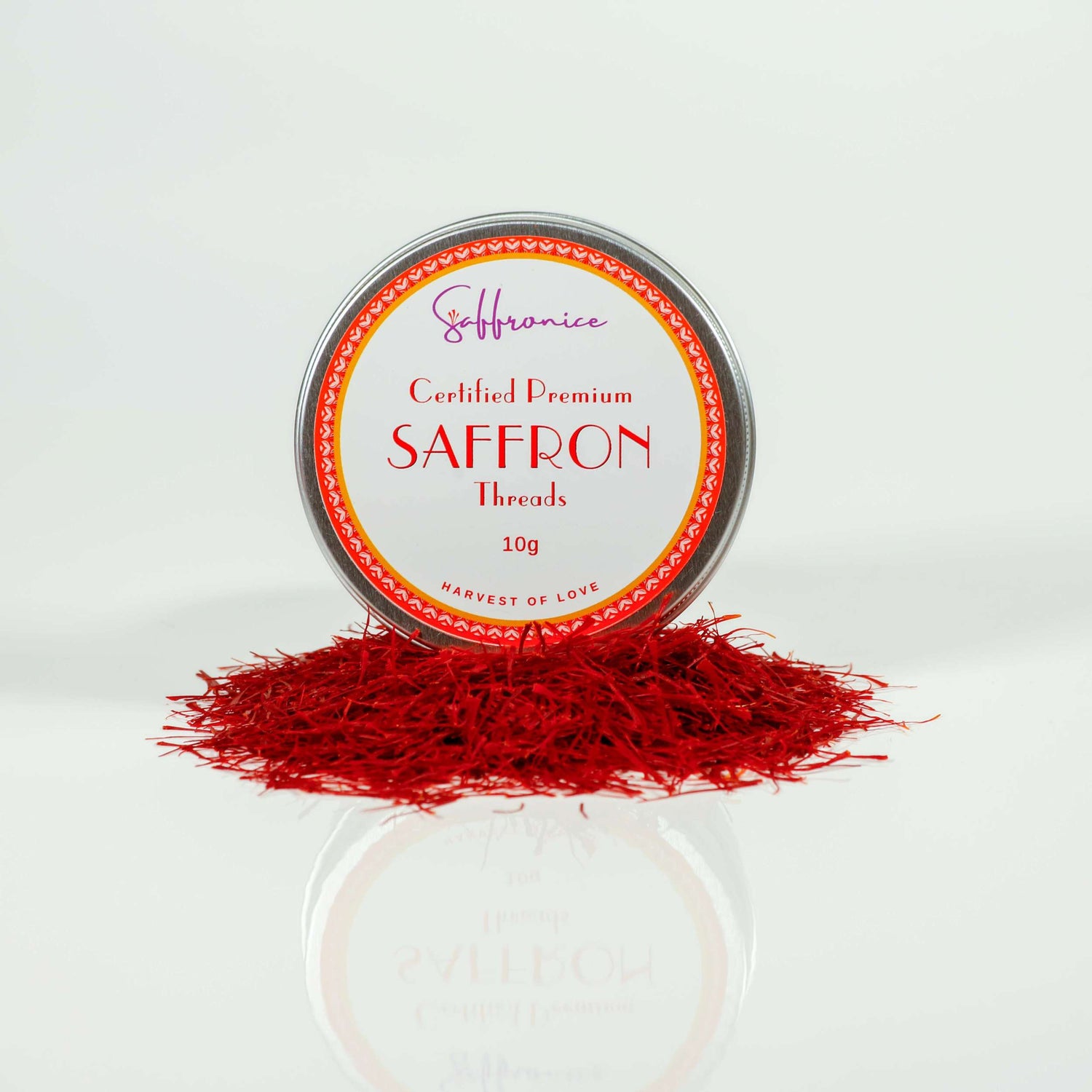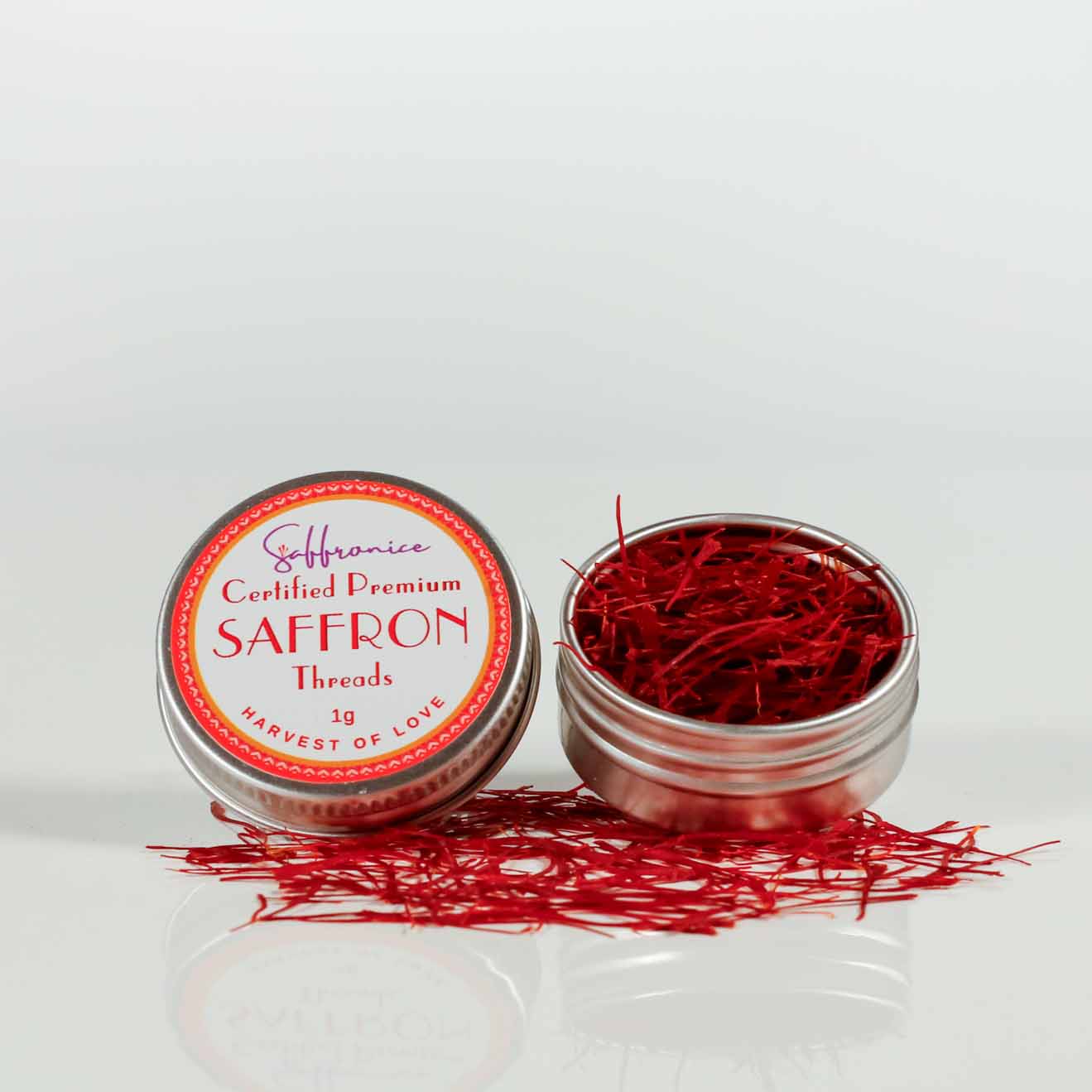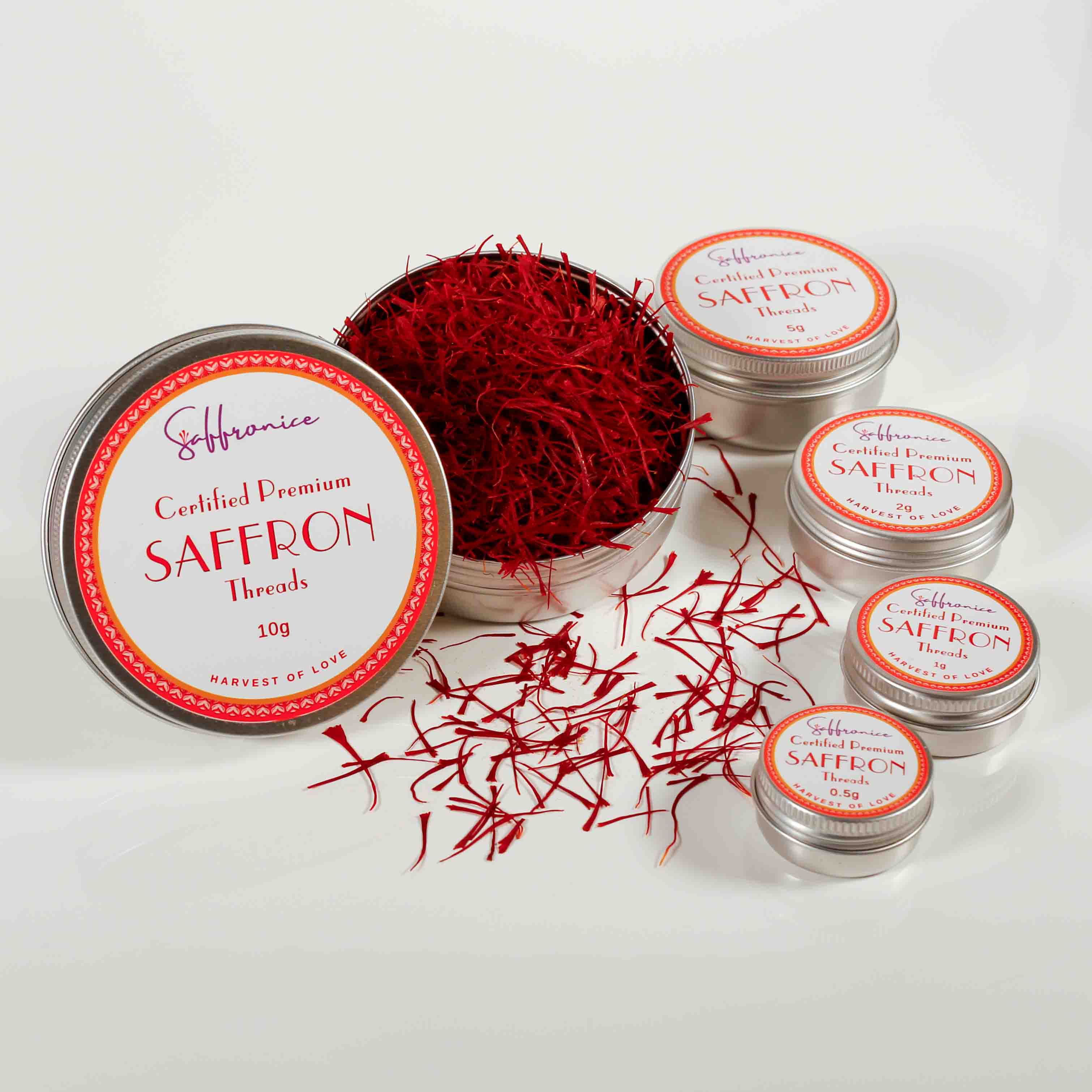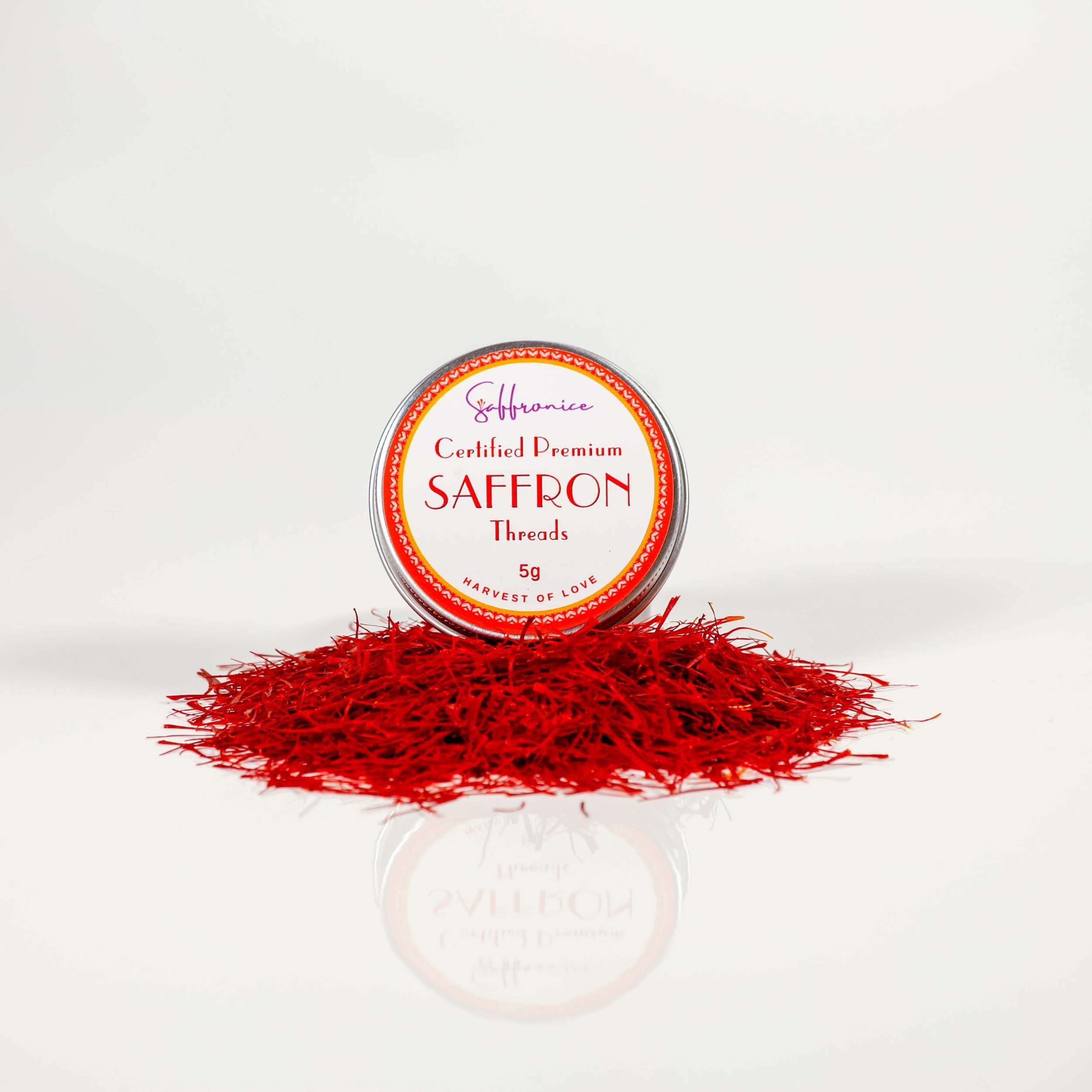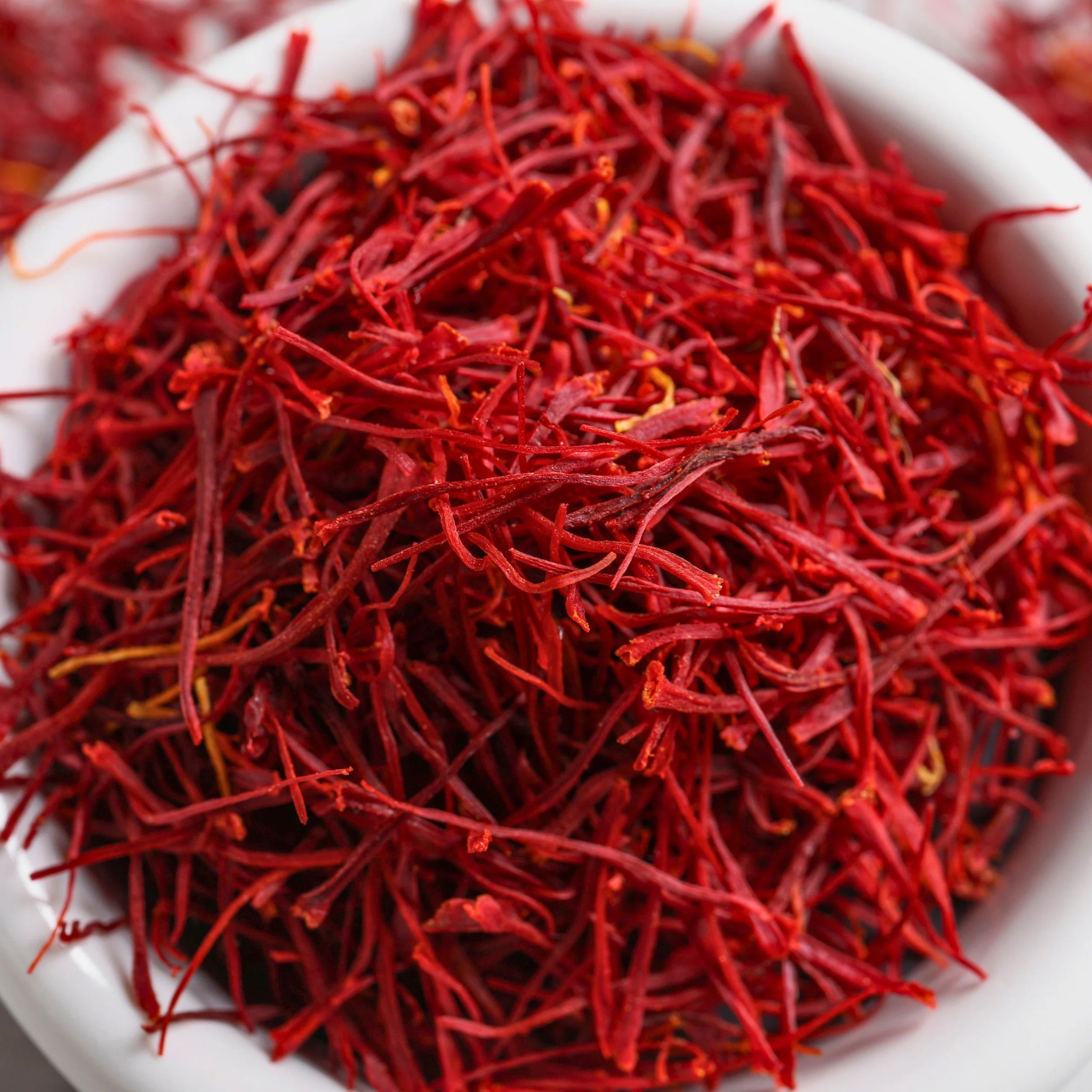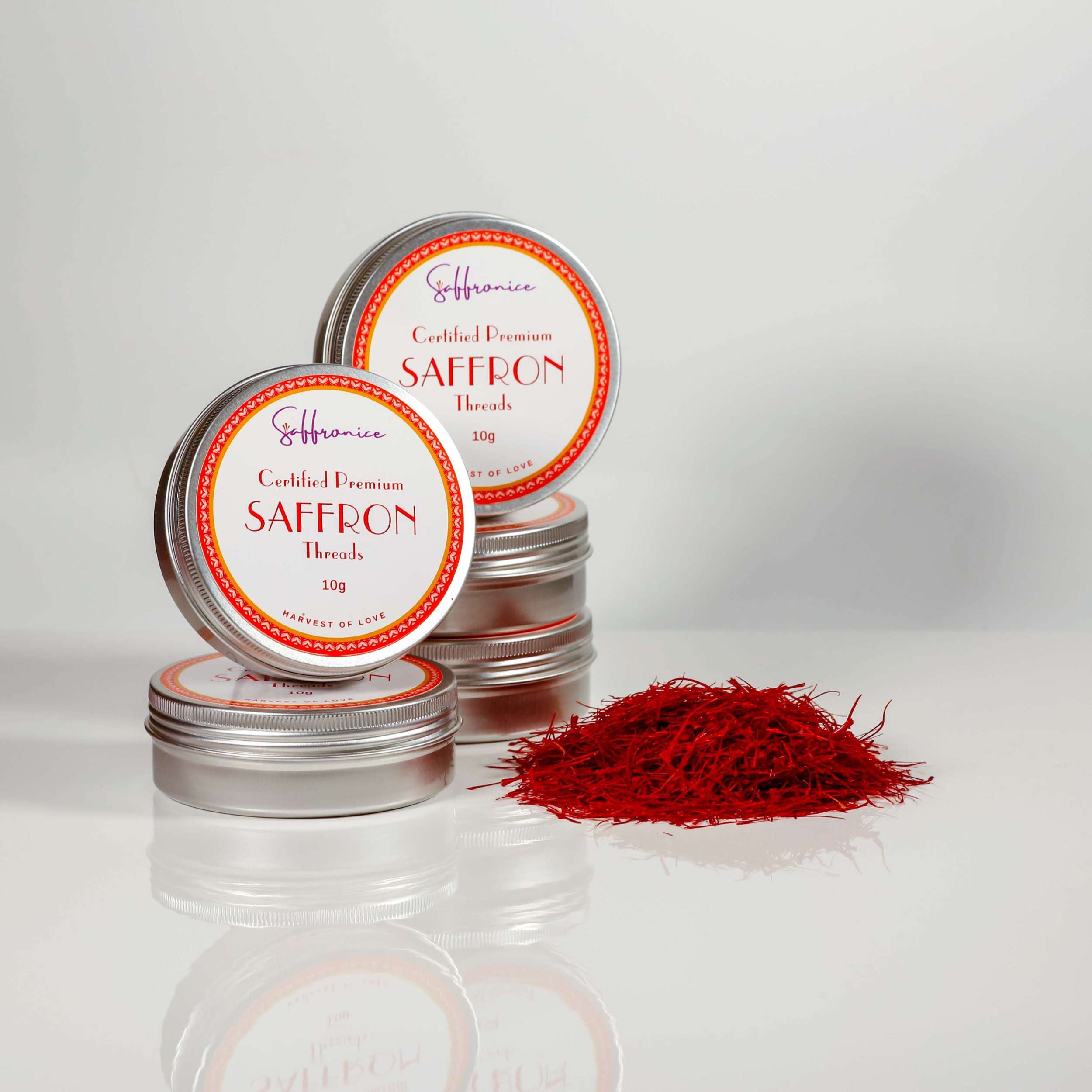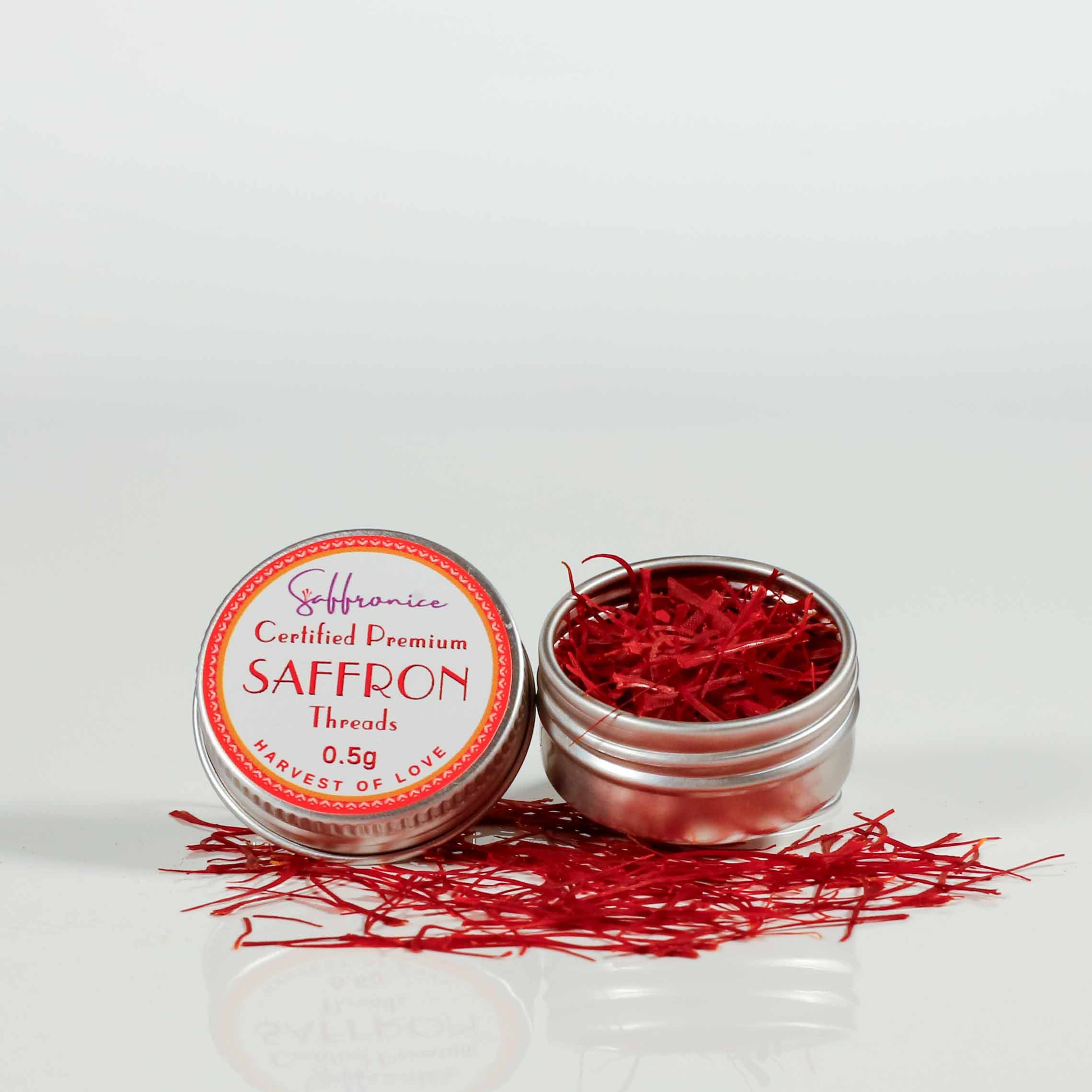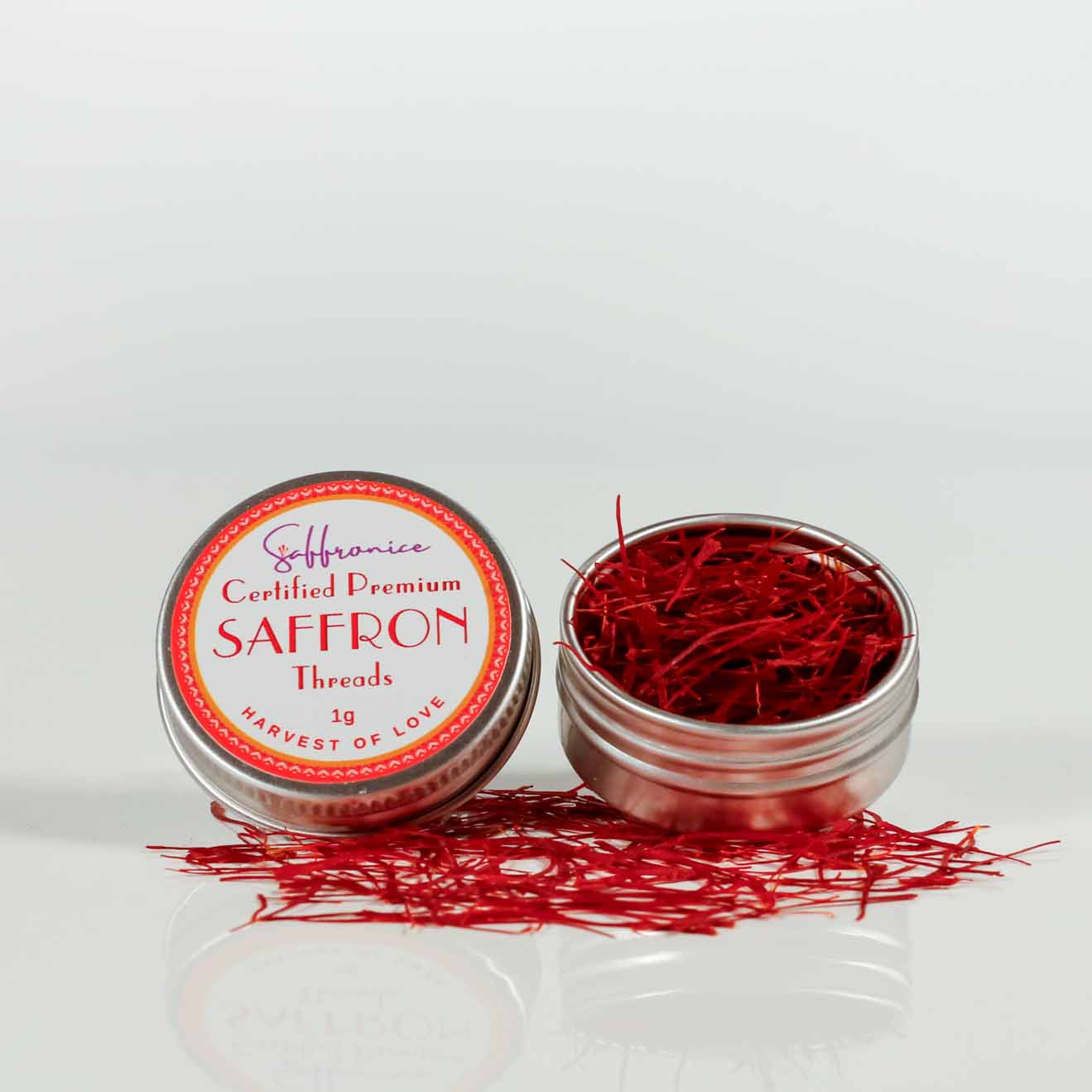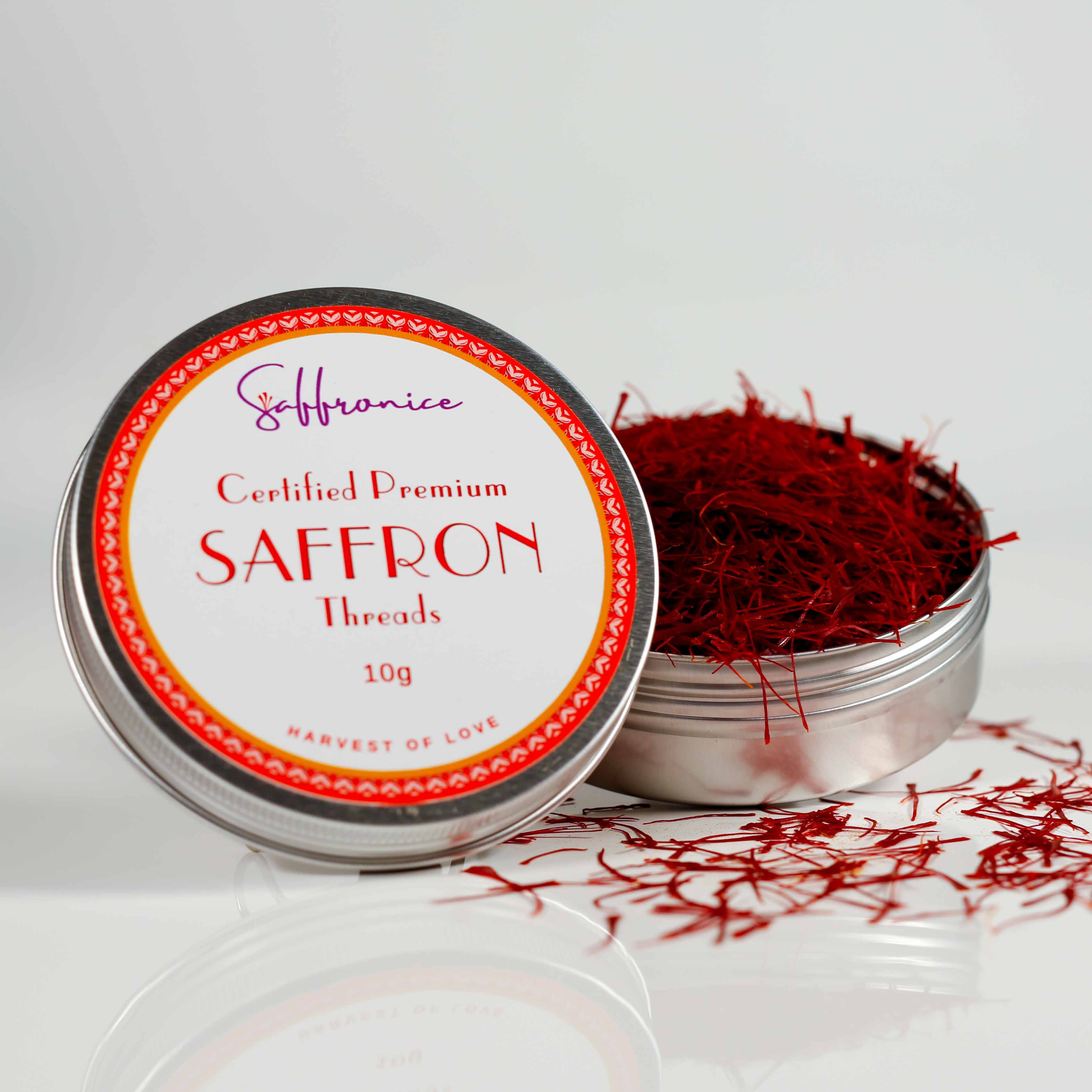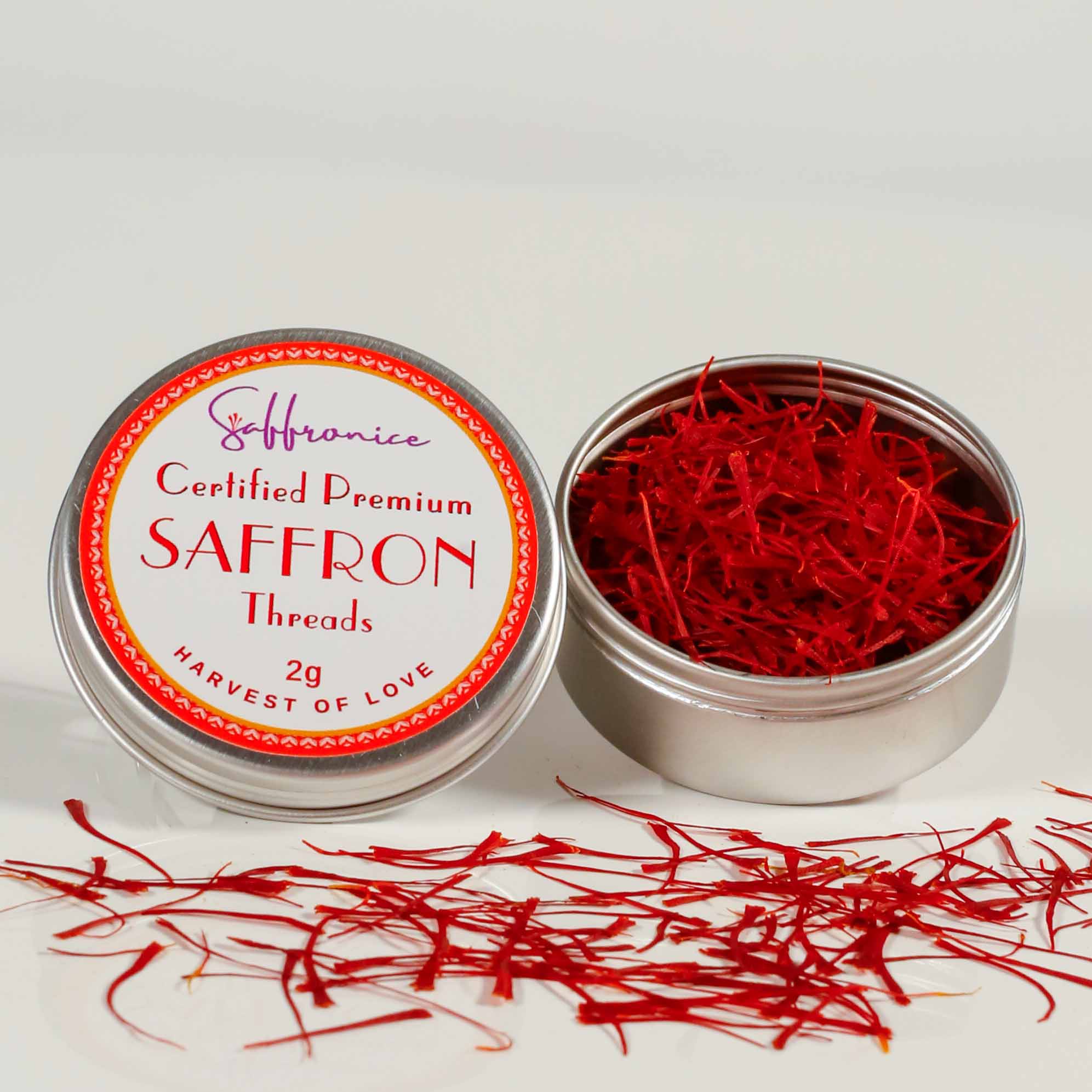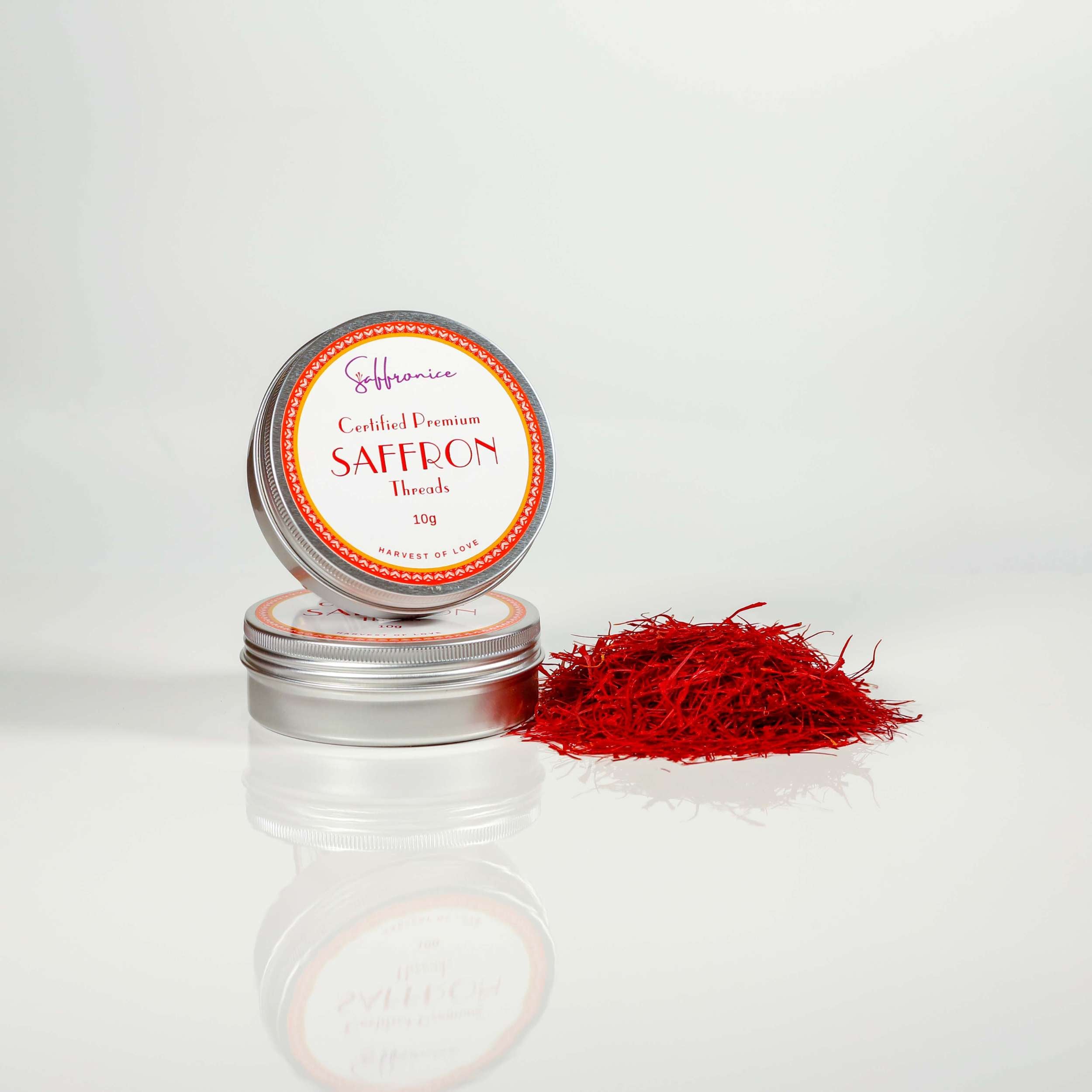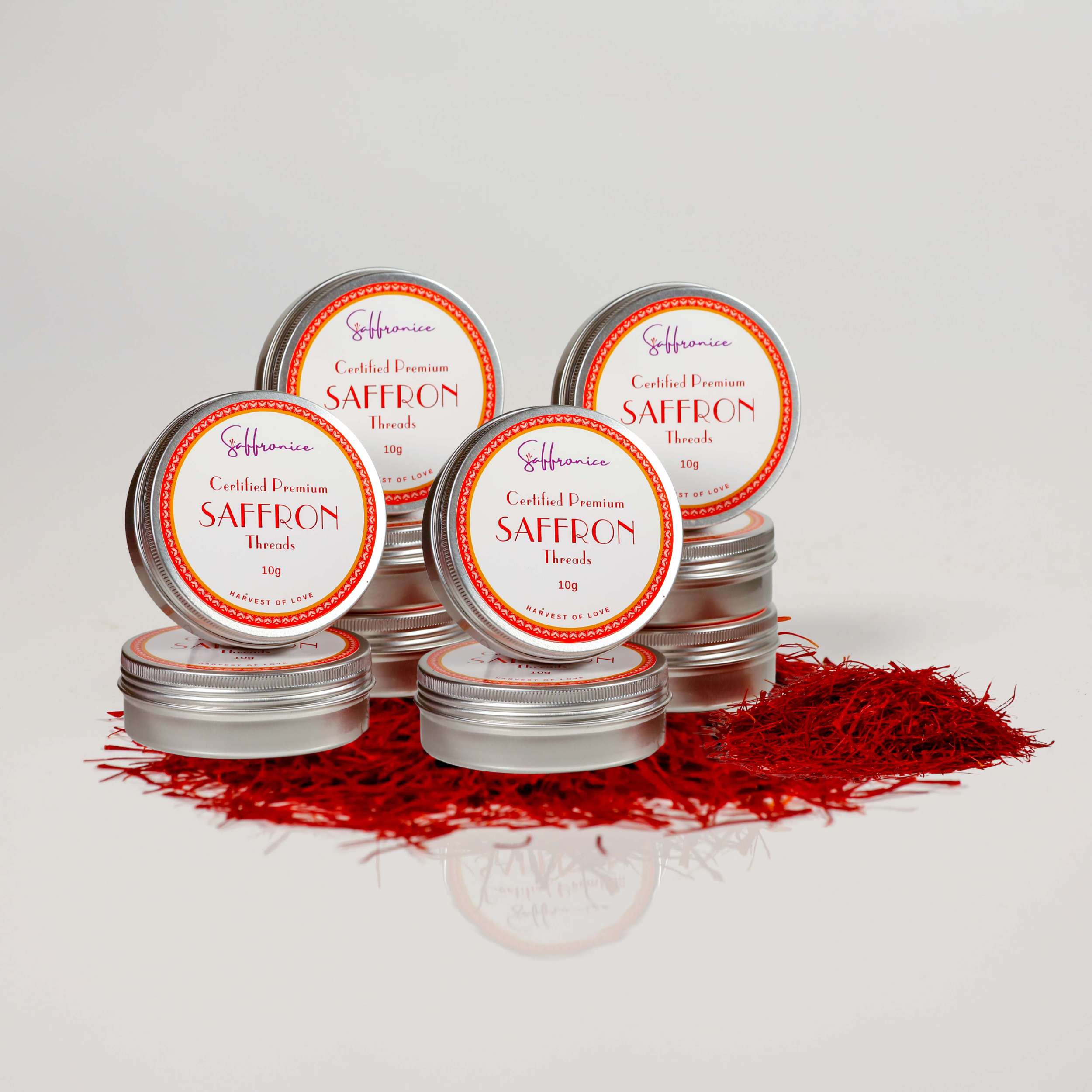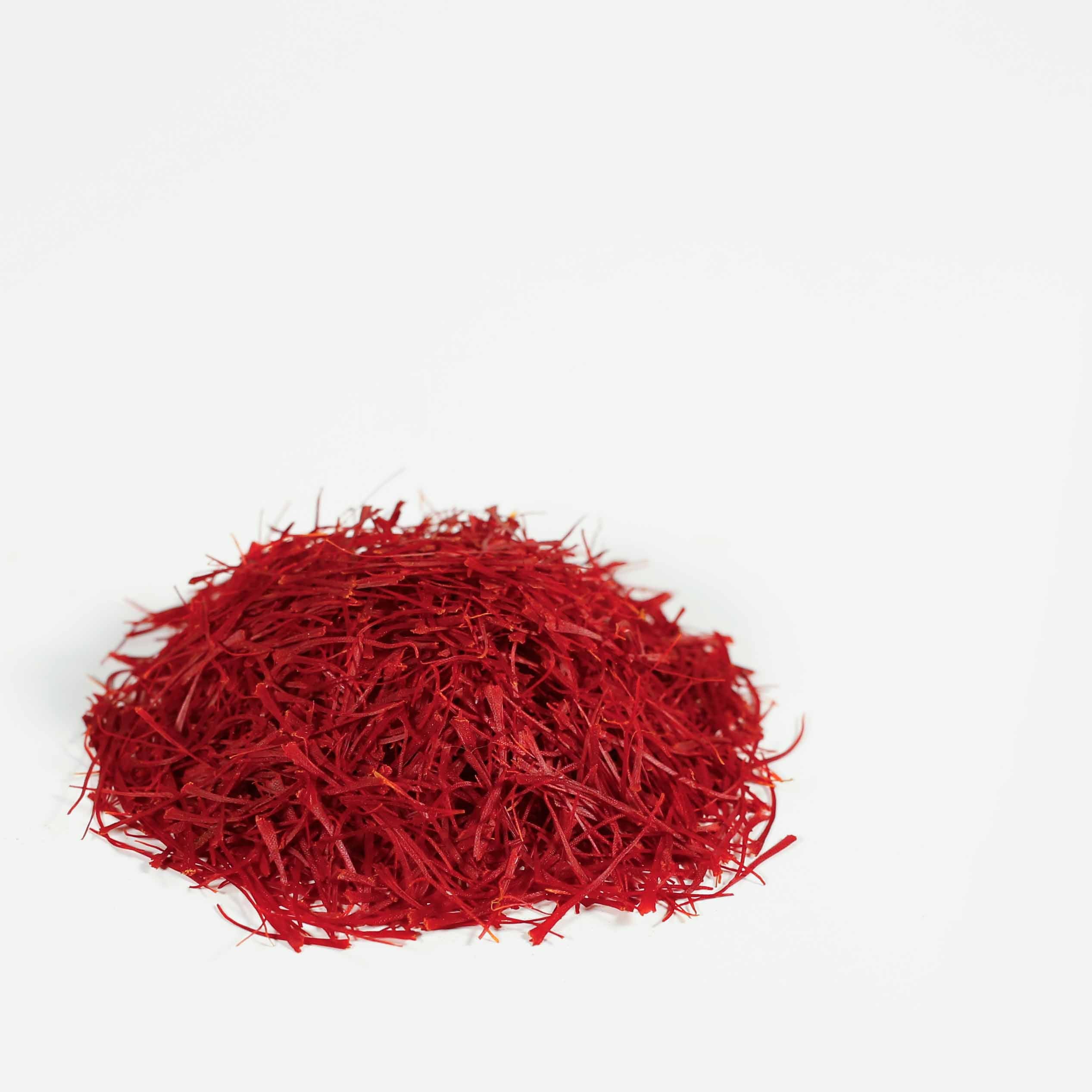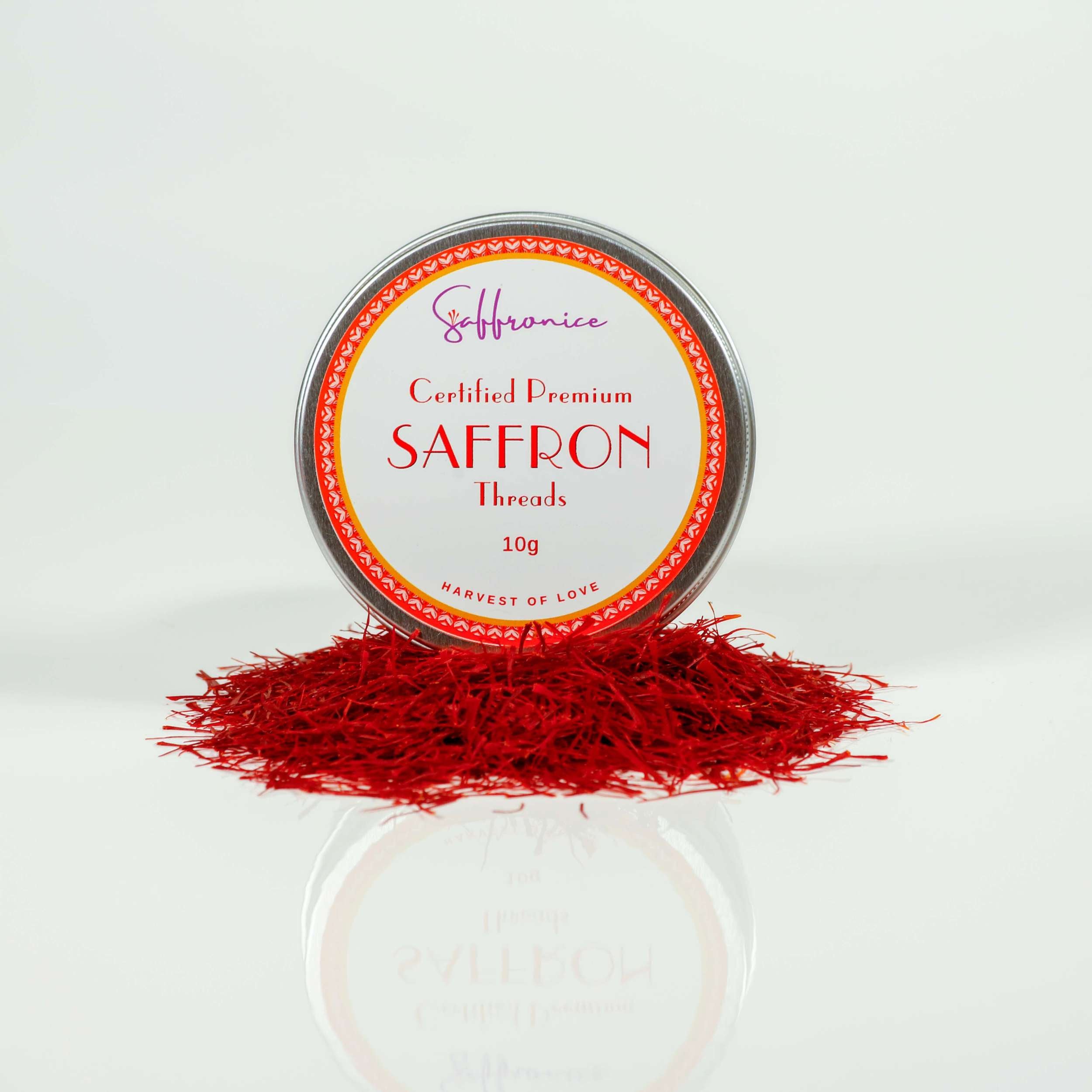Hey there, history buffs and culture vultures! Today, we're diving into the world of Saffron – that fancy spice that costs more than your designer shoes. But Saffron isn't just about adding pizzazz to your paella; it's got a backstory that's as colourful as its vibrant hue. So, grab a cup of chai (or saffron-infused tea, if you're feeling fancy) and embark on a journey through time, exploring how this little spice left a significant mark on cultures and religions worldwide. Spoiler alert: it's not just about the flavour!
Historical Background of Saffron

Ah, Saffron! That exotic, golden spice that's worth more than its weight in gold. I always chuckle when I use it in my cooking – it feels like I'm tossing in tiny, precious threads of history. But enough about my culinary adventures; let's dive into the rich history of Saffron, this fascinating spice.
Early Cultivation and Trade
Where It All Began
Picture this: it's around 3,500 years ago. The Bronze Age folks are doing their thing, and someone, somewhere (probably in Greece or Middle East), figures out that the stigma of a particular purple crocus can add flavour to their food. Boom! Saffron cultivation begins.
Fun fact: I tried growing crocuses once. It turns out you need about 75,000 flowers to produce a single pound of Saffron. Let's say my backyard experiment didn't entirely yield a spice empire.
Spreading the Saffron Love
As civilisations grew and trade routes expanded, so did the reach of Saffron. The Persians got their hands on it, and they were like, "Hey, this stuff is great!" They used it in their royal carpets and perfumes (talk about luxury!). Then, the Phoenicians, who were the FedEx of the ancient world, started shipping it all over the place. You can find more about this in "Saffron: A Global History" by Ramin Ganeshram.
Saffron in Ancient Civilizations

Ancient Beauty and Culinary Secrets
Let's hop over to ancient Egypt. Cleopatra used Saffron in her baths for its cosmetic benefits. Talk about bathing in luxury! And did I mention it was used in the embalming process of mummies? Quite the multipurpose spice, huh?
More Than Just a Spice
In ancient Greece, Saffron was not just a kitchen staple. It played a role in their medical practices. Hippocrates, the big daddy of medicine, was all about using Saffron to treat everything from sleeplessness to coughs. In Rome, they literally painted the town yellow with Saffron, using it in public spaces and halls. An excellent paper titled "Saffron in Antiquity" by Adrienne Mayor dives deep into its use in these ancient cultures.
There you have it – a brief, cheeky stroll down saffron lane. Who knew this little spice had such an extensive history? Next time you see Saffron in a recipe or on a shelf, remember you're looking at a spice that's been a superstar for millennia!
And remember, if you're planning to start your saffron farm, be prepared for a lot of crocus picking!
Saffron in Religious Contexts

Oh, Saffron, you're not just a culinary showstopper; you've also got some serious spiritual cred! Let's take a whimsical wander through the role of Saffron in various religions. It's like a spiritual road trip with more Saffron and fewer car snacks.
Buddhism: Symbolism and Use
Saffron: The Color of Enlightenment
In Buddhism, Saffron is more than a spice; it's a symbol. The color saffron represents purity and sacrifice, which is kind of a big deal in Buddhist beliefs. I once met a Buddhist monk whose robe was dyed in Saffron, and he told me the colour is a constant reminder of their quest for enlightenment. Pretty deep, right?
Saffron in Ceremonies
Buddhist monks use Saffron to dye their robes. This tradition dates back centuries. It's like their uniform, but way more spiritual and definitely more colourful. They also use it in various rituals and offerings. You can find more details in "The Color of Buddhism: Saffron's Symbolism" by Ananda Abeysekara.
Hinduism: Ritualistic Significance
A Divine Ingredient
In Hinduism, Saffron has a VIP pass to all religious ceremonies. It's used in the worship of deities, especially those representing strength and courage. I remember attending a Hindu wedding where Saffron was sprinkled everywhere, symbolising purity and prosperity. I got some on my shoe; I felt blessed for a week!
Mark of Sanctity
Hindus also use Saffron in 'tilak', a sacred mark worn on the forehead. It's not just a fashion statement; it's a sign of one's religious and cultural identity. Plus, it smells great! A detailed exploration of this can be found in "Saffron: The Sacred Spice" by Deepa Krishnan.
Christianity and Islam: Historical and Symbolic Uses
Christianity: From Robes to Manuscripts
In Christianity, Saffron has been used to dye the robes of the Catholic clergy. It's like they're saying, "Hey, this is important." And a fun fact: medieval European monks used Saffron to illuminate manuscripts. Talk about a golden touch!
Islam: Scent of Paradise
In Islam, Saffron is mentioned in Hadiths as one of the fragrances of paradise. It symbolises light and knowledge in various religious and cultural celebrations. You'll find it in foods and as a fragrance during religious events. The article "Saffron in Islamic Tradition" by Ayesha S. Chaudhry provides an insightful read on this.
"In delving deeper into the fascinating world of saffron, I came across an enlightening article from Britannica that sheds light on its rich history and varied uses. From its origins in the Mediterranean and Asia Minor to its status as the world's most expensive spice, Saffron's journey through time is as colorful as the spice itself. For those interested in exploring Saffron's historical significance, culinary uses, and cultural impact, I highly recommend reading this comprehensive overview. Learn more on Britannica about the topic of Saffron
Cultural Practices Involving Saffron

Hold onto your hats (or spice jars) because we're diving into the colourful world of Saffron and its role in various cultural practices. From weddings that smell better than a spice bazaar to folklore tales that could spice up any bedtime story, Saffron's got it all!
Weddings and Celebrations
A Splash of Golden Joy
Have you ever been to a wedding where Saffron is the star of the show? It's like attending a royal event, minus the corgis. In many cultures, Saffron is used in wedding rituals, symbolising purity, happiness, and a prosperous future. I remember my cousin's wedding; the rice was so yellow with Saffron, you'd think it was gold!
Celebratory Saffron Delicacies
And let's remember the food! Saffron is used in unique dishes prepared for weddings and celebrations. It adds not just flavour but also a touch of luxury. You can learn more about these festive dishes in "Saffron: The Golden Spice of Festivity" by Maria Benitez.
Symbolism in Literature and Folklore

Saffron in Storytelling
Saffron pops up quite a bit in literature and folklore, often symbolising light, wisdom, or wealth. I heard an old tale about a king who used Saffron to test his children's knowledge – spoiler alert; it was a clever metaphor for discerning true value in life. You can find more of these stories in "Folklore and Saffron: Colourful Tales" by Liam O'Sullivan.
Literary Luxury
Saffron often represents luxury or an experience of the senses in poetry and prose. It's like the literary world's version of a high-end perfume – just a dab, and the whole scene changes. "Saffron in Literature: A Study of Symbolism" by Elena García offers an in-depth look at this aspect.
Role in Traditional Medicine

Ancient Remedies
Now, onto my favourite part: traditional medicine. Saffron has been used for centuries in various medicinal practices. It's like the Swiss Army knife of spices – good for digestion, a mood booster, and even used in treatments for colds. I remember my grandmother always had Saffron in her home remedy kit.
Avicenna's Legacy: Unveiling Saffron's Medicinal Marvels
Avicenna, also known as Ibn Sina, a renowned Persian polymath of the Islamic Golden Age, made significant contributions to various fields, including medicine. In his most celebrated work, "The Canon of Medicine," Avicenna extensively explored the therapeutic properties of many herbs and spices, including saffron. He recognized saffron's potential in treating various ailments, valuing its antidepressant and digestive properties. Avicenna's insights were revolutionary for his time and laid the groundwork for integrating saffron into medical treatments, illustrating its importance beyond culinary uses. His work on saffron, among other natural remedies, highlighted the interconnectedness of nature and medicine, a concept that resonates even in modern holistic health approaches.
Modern Studies and Discoveries
Interestingly, modern science is catching up with what traditional medicine practitioners have known for ages. Research studies have shown Saffron's potential in treating depression and PMS symptoms and even as an antioxidant. For a deep dive into this, check out these links:
Saffron therapy for the treatment of mild/moderate age-related macular degeneration
Saffron (Crocus sativus) for depression: a systematic review of clinical studies
Cardiovascular effects of saffron: an evidence-based review
There you go! Saffron is not just a spice to add to your paella; it's a cultural and medicinal powerhouse. From spicing up weddings to starring in folk tales and healing the sick, it's the jack-of-all-trades in the spice world. Next time you see a saffron strand, give it a little nod for its impressive resume!
Saffron in Art and Architecture

Buckle up, art and architecture enthusiasts! We're about to explore how Saffron, our favourite golden spice, has splashed its colour and influence over canvases and buildings throughout history. It's like finding little yellow brush strokes and stone carvings in the most unexpected places!
Artistic Depictions
A Canvas of Gold
Saffron has been a muse for artists since, well, forever. In paintings, it often symbolises light, wisdom, or wealth (seeing a pattern here?). I once saw a painting where the Saffron in the background practically glowed – it was like the artist had a secret source of sunlight.
Storytelling Through Colors
Beyond just being a pretty colour, Saffron tells stories in art. It can represent anything from divine wisdom to earthly pleasures. Artists have used saffron hues to bring warmth and depth to their works. For an interesting read, check out "Saffron in Art: A History of Color and Symbolism" by Fiona Banner.
Influence on Architectural Designs
Building with a Touch of Saffron
Moving from the canvas to the cornerstone, Saffron has also left its mark on architecture. In some cultures, buildings were adorned with saffron-coloured designs, symbolising wealth and hospitality. Imagine walking into a building and being greeted by the warm embrace of saffron hues – it's like a visual hug!
Symbolic Structures
In certain architectural traditions, saffron colours were used in spaces of learning or healing, symbolising enlightenment and health. It's like the architects were saying, "This place isn't just a building; it's a beacon of knowledge and well-being." You can delve deeper into this in "Saffron Hues in Architecture: Symbolism and Design" by Carlos Moreno.
And there we have it – Saffron's journey through art and architecture. Who would have thought that a tiny spice could play such a significant role in the worlds of art and building design? Next time you admire a piece of art or a beautiful building, watch for that splash of Saffron – it might be hiding in plain sight!
Saffron's Names in Different Cultures

Prepare for a linguistic tour de force with our star spice, Saffron! It's like a world traveller with a passport full of aliases. Each name tells a story, each term a testament to the spice's global journey. Let's unravel the fascinating tapestry of names saffron has been given across cultures and the stories behind them.
Variations of Saffron's Name Across Cultures
A Global Nom de Spice
Saffron has more names than a secret agent. In Spain, they call it "azafrán" – roll the 'r' for extra flair. Head over to France, and it's "Safran," très chic! It's known as "za'faran" in the Middle East, always making me think of exotic bazaars and magical tales.
The Many Faces of Saffron
In India, it's "kesar" or "zafran," essential in both cuisine and culture. And let's not forget Japan, where it's called "saffuran." Each name is like a cultural fingerprint, revealing how deeply Saffron is woven into the fabric of each society. For a more comprehensive list, "Saffron: The Spice of a Thousand Names" by Lila Patel is a fantastic resource.
Linguistic and Etymological Insights
Tracing the Roots
The word "saffron" itself is as interesting as the spice. It's derived from the Arabic "za'faran," which is thought to originate from the Persian word "zarparan," meaning "having golden stigmas." It's like a linguistic journey through time and space!
Language's Spice
The etymology of Saffron's name in different languages often reflects the cultural significance and uses of the spice in those regions. The name hints at its medicinal properties in some languages; in others, it's more about the colour or aroma. For a deep dive into this linguistic adventure, "Etymology of Saffron: A Cultural Exploration" by Dr Anita Singh provides enlightening insights.
And there you have it – the globe-trotting, name-changing escapades of Saffron! It's not just a spice; it's a linguistic chameleon, adapting to the languages and cultures it touches. Next time you hear a different name for Saffron, remember the rich tapestry of stories and traditions it represents. Happy spice-trailing!
Global Saffron Spectrum: 50 Languages, One Spice
| Language | Name for Saffron | Language | Name for Saffron |
|---|---|---|---|
| Afrikaans | Saffraan | Malay | Kunyit |
| Arabic | زعفران | Maltese | Żagħfran |
| Armenian | զաֆրան | Norwegian | Safran |
| Azerbaijani | Zəfəran | Persian | زعفران |
| Basque | Azafraia | Polish | Szafran |
| Belarusian | Шафран | Portuguese | Açafrão |
| Bengali | জাফরান | Romanian | Şofran |
| Bosnian | Šafran | Russian | Шафран |
| Bulgarian | Шафран | Serbian | Шафран |
| Catalan | Safrà | Slovak | Šafran |
| Chinese | 藏红花 | Slovenian | Žafran |
| Croatian | Šafran | Spanish | Azafrán |
| Czech | Šafrán | Swedish | Saffran |
| Danish | Safran | Tamil | குங்குமப்பூ |
| Dutch | Saffraan | Telugu | కుంకుమపువ్వు |
| English | Saffron | Thai | สีเหลือง |
| Estonian | Safran | Turkish | Safran |
| Finnish | Sahrami | Ukrainian | Шафран |
| French | Safran | Urdu | زعفران |
| Galician | Azafrán | Uzbek | Za'faron |
| German | Safran | Vietnamese | Nghệ tây |
| Greek | Κρόκος | Welsh | Saffrwm |
| Gujarati | કેસર | Yoruba | Saffron |
| Hebrew | זעפרן | Zulu | Isafroni |
| Hindi | केसर |
Saffron's Legacy in Modern Times

As we zoom into the present day, Saffron's legacy is not just tucked away in history books; it's alive, kicking, and adding colour to modern times! This spice isn't just resting on its ancient laurels – it's out there, painting towns yellow and making its presence felt in contemporary culture. Let's explore how this age-old spice keeps up with the 21st century.
Contemporary Cultural Festivals
Saffron: The Star of Modern Festivities
Did you know there are entire festivals dedicated to Saffron? It's like Coachella but with more spices and fewer flower crowns. In countries like Spain, the Saffron Festival in Consuegra is a vibrant affair, celebrating the harvest with music, dance, and a lot of saffron-themed cuisine. It's a sensory overload in the best way possible.
Global Celebrations
Around the world, from the Saffron Rose Festival in Spain to the Pampore Saffron Festival in Kashmir, these events are not just about having fun; they're about preserving a tradition, a culture, and, of course, a spice. They include cooking competitions, traditional dances, and even saffron harvest demonstrations. It's like a tribute to this golden spice.
Preservation in Modern Societies

Saffron in the Modern World
In our fast-paced, modern world, Saffron has found a place as a bridge between the past and the present. It's used in traditional dishes passed down through generations, keeping culinary heritage alive. In some regions, saffron farming techniques have remained unchanged for centuries, like a living museum of agriculture.
The Spice of Sustainability
Interestingly, there's also a growing interest in sustainable saffron cultivation. With concerns about environmental impact and ethical sourcing, modern saffron producers are exploring ways to grow the spice in a way that's kind to the earth and fair to the farmers. For insights into this, "Sustainable Saffron: The Future of Spice Cultivation" by Dr. Emily Larson is a must-read.
So, there you have it! Saffron's not just a relic of the past; it's a dynamic, vibrant part of our modern world. From being the centrepiece of cultural festivals to playing a role in sustainable agriculture, Saffron proves that some things really do get better with age. Next time you see Saffron in your spice rack, remember it's not just a spice – it's a legacy!
Summary of Saffron's Enduring Legacy

As we wrap up our saffron-scented journey, it's clear that this is no ordinary spice. From its humble beginnings as a coveted flower in ancient civilisations to its present-day status as a cultural and culinary icon, Saffron has woven a vibrant thread through the tapestry of human history. Its legacy is a colourful blend of tradition, art, medicine, and spirituality.
Reflection on Historical Contexts
The Timeless Spice
Reflecting on Saffron's journey through time, it's fascinating to see how it has maintained its significance across various cultures and epochs. Whether in the saffron-robed Buddhist monks seeking enlightenment, the golden-hued manuscripts of medieval monks, or the saffron-infused dishes that mark celebrations and festivals worldwide, Saffron has remained a symbol of luxury, wisdom, and joy.
More Than Just a Culinary Delight
But Saffron's story goes beyond its uses in cooking and dyeing. It's a testament to human ingenuity and adaptability. The way Saffron has been integrated into different cultural practices, art forms, and architectural designs reflects our ability to embrace and incorporate the natural world into our lives in meaningful ways.
A Bridge Between Past and Future
Saffron is a beacon of hope and continuity in today's world, where sustainability and cultural preservation are more critical than ever. Its cultivation, deeply rooted in traditional methods, is evolving to meet modern sustainability and ethical production standards. As we move forward, Saffron's legacy reminds us of the importance of preserving our cultural heritage while adapting to the changing world.
In conclusion, Saffron is not just a spice to be measured and used in recipes. It's a historic gem, a cultural storyteller, and a bridge connecting our past to our future. Its story is rich, its impact profound, and its legacy enduring. In all its golden glory, Saffron is truly a treasure of human history.
Saffron FAQ's

-
What is the origin of saffron?
- Saffron originated in Greece or Southwest Asia, with evidence dating back to the Bronze Age.
-
How old is the cultivation of saffron?
- Saffron cultivation dates back over 3,000 years.
-
What civilizations first used saffron?
- Ancient civilizations like the Minoans in Crete and the inhabitants of Mesopotamia were among the first known users of saffron.
-
Was saffron mentioned in ancient texts?
- Yes, saffron is mentioned in ancient texts, including the Bible and Greek mythology.
-
What was saffron used for historically?
- Historically, saffron was used for its medicinal properties, as a dye, in cooking, and as a perfume.
-
How did saffron spread globally?
- Saffron spread through trade routes, especially by Persian and Arab traders, to parts of Europe, Asia, and later to the Americas.
-
What is the etymology of the word 'saffron'?
- The word 'saffron' comes from the Arabic ‘za’faran’, which possibly derives from the Persian word 'zarparān' meaning 'gold strung'.
-
What is the earliest depiction of saffron in art?
- The earliest depictions of saffron in art are Minoan frescoes from around 1600-1500 BC, depicting saffron harvesting.
-
How was saffron used in ancient medicine?
- In ancient medicine, saffron was used for treating ailments like gastrointestinal issues, insomnia, and even depression.
-
Did saffron have religious or cultural significance in ancient times?
- Yes, saffron had religious and cultural significance, often used in rituals and offerings in various ancient cultures.
Read other interesting blogs about Value and Heritage of Saffron.


